Text
The Widow's Best of 2023
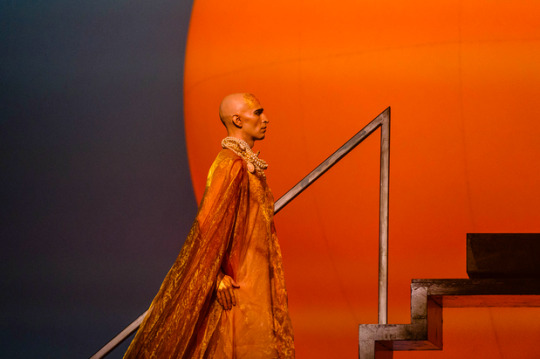
Jane Hobson 2023: Following such a desperate year for so many in the world this quotation by Nietzsche seems pertinent. "We have art in order not to die of the truth." So, in an effort to uplift whoever might read this, here's a somewhat curtailed list of a few of our favourite things we've seen this year. It wasn't the hottest time for live shows; we walked out of five! One every few years, maybe, but five! Disappointing. However we still managed to find some wonderful things, not all of them new. Let's begin with…
MOST SPECTACULAR: Phelim McDermott's Akhnaten at the London Coliseum. We'd been asked so many times: "Have you seen Akhnaten?" No, we hadn't but now we have and, OK, it's a Philip Glass opera (pictured above and below) but really, with a set by Tom Pye and costumes by Kevin Pollard it's a full-on feast for the senses, with the ever-inventive Gandini Juggling, choreographed by Sean Gandini, doing what they do best.
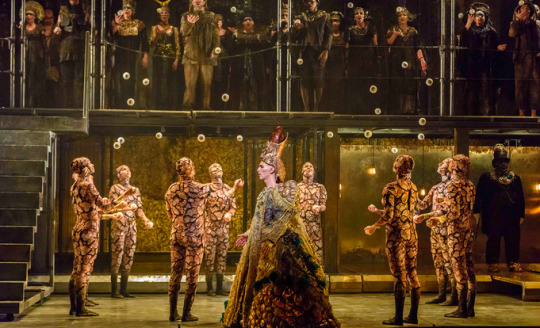
Jane Hobson BEST CIRCUS SHOW: Cirque Le Roux's thrilling and ambitious Entre Chiens et Louves – staged at Le Bon Marché department store in Paris (take note Selfridges) – took our breath away even without the sublime Lolita Costet in the cast; and Circa's Humans II at the Queen Elizabeth Hall at London's Southbank Centre.
COMPANY TO WATCH: Hoops Désolé! A “crazy” six-strong troupe of artists drawn from the circus school in Quebec, Cirque du Soleil and Cirque Éloize.

Emma Kauldhar BEST DANCE: Wayne McGregor’s Woolf Works at London’s Royal Opera House, with the mesmerising Alessandra Ferri, who at 59 was the same age as Virginia Woolf when she died. Another dancer with astonishing longevity is the Spanish Lucía Lacarra, now 48, who appeared in the Ballet Icons Gala at the London Coliseum.
BEST SHOWBIZ MEMOIR: Walking Through Walls by performance artist Marina Abramović; Do It For Your Mum by Roy Wilkinson, then manager of his brothers' band British Sea Power.

MOST TERRIFYING: He's done some daring things in his time and on World Circus Day Hungarian high-wire artist Laci Simet performed a sensational walk across the River Danube – 40 metres up in the wind – with only a balance pole to keep him safe.
BEST FILM: German film Afire or Roter Himmel by Christian Petzold (he’ll never let you down); Babak Jalali’s Fremont, set in a fortune cookie factory; and the Mexican film The Empty Hours directed by Aarón Fernández.
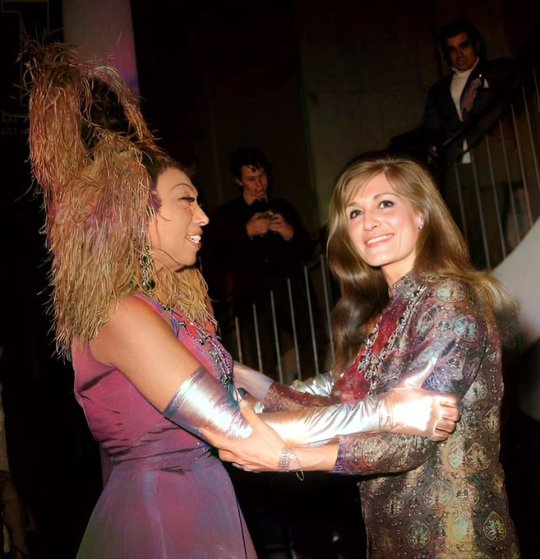
BEST ARCHIVE PIC: Josephine Baker and Dalida at L’Olympia music hall in Paris in 1968. A legendary pair!
LONGEST-SERVING FEMALE DJ: Texan Mary McCoy, who at 85 has been on the air for almost 72 years, and entered the Guinness Book of Records.
BEST DESERT ISLAND DISCS CASTAWAY: Actor/comedian/writer and so on, Adrian Edmondson; snooker star Ronnie O’Sullivan.
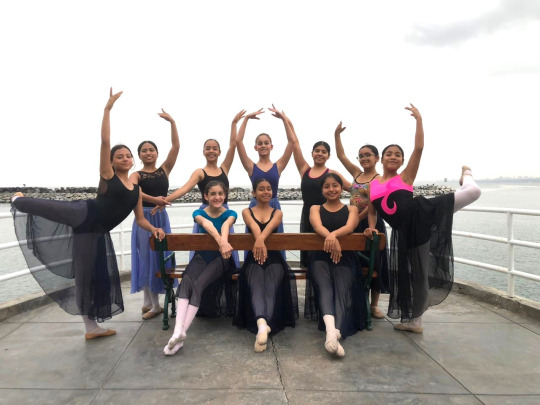
MOST INSPIRING: The Maricarmen dance school in Chorrillos, south of Lima, in Peru, run by retired dancer Maria del Carmen Silva, offers free classes to girls of all abilities from low-income areas.
BEST DOCUMENTARY: Never Be a Punching Bag for Nobody by indie rock musician Naomi Yang; My Indiana Muse, in which artist Robert Townsend discovers his Kodachrome muse, Helen.
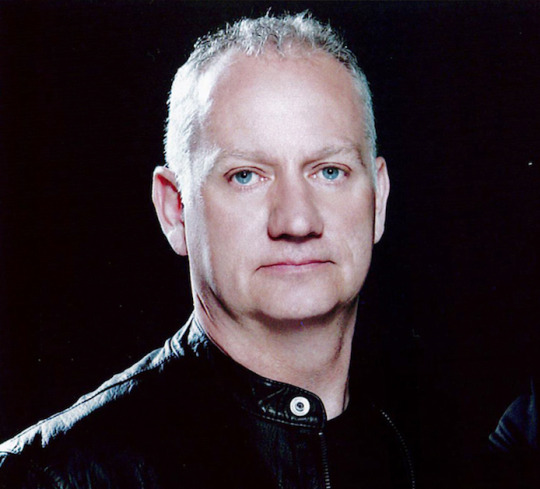
FOND FAREWELL: Actor David McCallum, who, as The Man from U.N.C.L.E.’s Illya Kuryakin was an enduring heartthrob for a certain generation of girls and women. Closer to home the UK lost its leading circus director, Phillip Gandey (above), at 67, whose shows – including Cirque Surreal, The Chinese State Circus and The Lady Boys of Bangkok – were always far and away the most creative and exciting; and The Circus of Horrors – a show I reviewed more times than any other, except perhaps Cirque du Soleil – lost its co-creator and frontman, Doktor Haze (below) at 66. Along with Gerry Cottle, they were notable as two of the nicest circus men I met during my reviewing years, and are greatly missed.
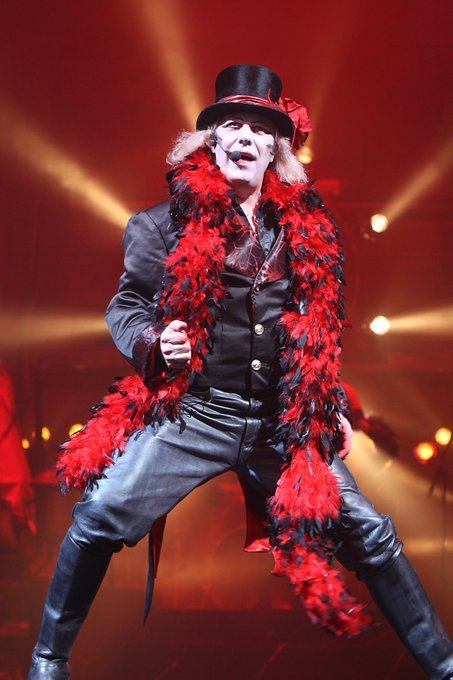
LAST WORD: It wouldn't be a Widow Stanton 'Best of' without some showgirls. This picture was taken by the Argentinian photographer Luisita Escarria, who with her sister Chela, documented all the artists appearing in revues in Buenos Aires from 1958 to 2009. Their story and wondrous archive might have been lost had it not been rescued by filmmakers Sol Miraglia and Hugo Manso. Their documentary Foto Estudio Luisita will warm your heart… and fortunately both the sisters lived long enough to see it.

Compiled by Liz Arratoon
#Best of 23#Akhnaten#Woolf Works#Gandini Juggling#Hoops Desole#phillip gandey#Doktor Haze#circus of horrors#Foto Studio Luisita
0 notes
Text
The Widow's Best of 2022

On the last day of 2022, Team Widow have temporarily come out of mourning to tell you about the best things they've seen this year. But has anyone else noticed the dismal effect Brexit has had on shows coming to the UK? This year, like never before, there have been very few live shows we wanted to see. So once again radio, books and films have come to our rescue. But let’s kick off with the excitement of being able to see the iconic Pam Grier at London’s BFI doing a Q&A after a screening of her 1974 film Foxy Brown (pictured). Still completely spectacular, she’s our PERSON OF THE YEAR.
BEST BIOPIC: Staying with strong independent women, the wonderfully camp Dalida tells the story of the Egyptian born Italian-French singer and actress. For once the actor playing the role of a real person – Sveva Alviti – actually looked similar to the star.
BEST ARCHIVE CIRCUS CLIP: Film star Alain Delon not doing at all badly on Washington trapeze at the Gala of the Union of Artists in 1959. Interesting fact: His son Anthony is Alviti’s partner.
BEST TWITTER CIRCUS PIC: The original rubber woman, posted by Pablo Fanque.

BEST DOCUMENTARY: Too many great ones to choose from so Ailey, about dancer and choreographer Alvin Ailey; Angèle, about the Belgian pop star; The Sparks Brothers about the band Sparks; Jane by Charlotte, in which Charlotte Gainsbourg films her mother, Jane Birkin; Keyboard Fantasies about transgender musician Beverly Glenn-Copeland and, away from showbiz for a minute, Hold Your Breath: The Ice Dive, sees free diver Johanna Nordblad attempt to break the world record for the distance travelled under ice with one breath. Eek!
BEST DESERT ISLAND DISCS CASTAWAY: Again too many good ones, so Bradley Walsh, Robert Plant and Rita Tushingham.
BEST DANCE: Ram Charan Teja and NT Rama Rao Jr in Bollywood blockbuster RRR, which also gets BEST CGI.
BEST BOOK: The Manningtree Witches by AK Blakemore, and speaking of witches…

BEST WITCH(ES): Kathryn Hunter (above) playing all three witches in the film The Tragedy of Macbeth. Incidentally, her husband, the great Complicité actor – and voice of Pingu – Marcello Magni, sadly died this year.
BEST ‘THIS CULTURAL LIFE’ SUBJECT: Spanish ballet dancer Tamara Rojo, now artistic director of San Francisco Ballet.
BEST INTERVIEW: Carol Burnett by high school student Olivia Freeman in Vanity Fair. Herbie Hancock in the Guardian by Stevie Chick. BEST REVIEW: Durand Jones and the Indications also by Stevie Chick.

BEST FILM CHARACTER: The fabulous Jan Stevens in Flux Gourmet, played by Gwendoline Christie, who wears costumes by Giles Deacon and hats by Stephen Jones; and Mike Myers' ridiculous British intelligence officer Paul Canterbury in Amsterdam.
BEST MAGIC: FISM World Champion of Magic, French card magician Markobi's seemingly chaotic style perhaps being inspired by former world champion Lennart Green.
BEST SHORT FILM: NEST by Icelandic director Hlynur Pálmason.
BEST LINE IN A FILM: “It’s hard in these cooler months to hold on to one’s vivacity,” from Emily. So true!
BEST LOVE STORY: French volcanologists Katia and Maurice Krafft, whose story is told in the documentary Fire of Love. Their love burned brightly but they trod a dangerous path and inevitably came to a fiery end.

BEST ARCHIVE PIC: The Bluebell Girls, from the Lido Nightclub in Paris, perform on suspended platforms above the audience at the Stardust Hotel, Las Vegas, Nevada, in 1958, which leads on to…
FOND FAREWELL: The Lido closed Franco Dragone's thrillingly bonkers show Paris Merveilles and said goodbye to showgirls and cabaret dancing to reopen as a dull venue for musicals. Unhappy face! And the beautiful Carters Steam Fair stopped touring.
FINAL CURTAIN: Animal trainer Rosi Hochegger died suddenly in September. Her performances with her horse, Scout, and her dogs were highly acclaimed and widely loved.

Here's to a better 2023. David Mills' enthralling mailout Quality Time will keep you going week by week, and make the most of the London International Mime Festival in January, which, after an astonishing 47 years, is going to be the last one. Ah, those heady days when I was handed its programme by the great Peter Hepple and told to review whatever I wanted.
Compiled by Liz Arratoon
#pam grier#foxy brown#dalida#alain delon#alvin ailey#Angele#sparks#jane birkin#beverly glenn-copeland#Johanna Nordblad#bradley walsh#robert plant#rita tushingham#ram charan teja#NT Rama Rao Jr#rrr film#CK Blakemore#carol burnett#herbie hancock#durand jones & the indications#markobi#hlynur pálmason#gwendoline christie#mike myers#Katia and Maurice Krafft#lido paris#carters steam fair#rosi hochegger#LIMF
0 notes
Text
Tricity Vogue, cabaret performer, musician and band leader of Tricity Vogue’s All Girl Swing Band
A regular on the cabaret scene, Tricity Vogue – who grew up in Leeds but now lives in rural Leicestershire – overcame various hitches and disappointments in her younger years to become a singer, musician, teacher and band leader. She created Tricity’s Vogue’s All Girl Swing Band in 2011. Before all the disruptions of the last 18 months, they regularly filled the dance floor at swing nights, parties, weddings and balls, playing favourite tunes from the twenties and thirties, as well as pop numbers given the retro treatment and many of what she calls her “cheeky jazz” originals. The band now returns to the Crazy Coqs in London almost two years after their last scheduled gig at the venue was cancelled because of the pandemic. Tricity chats to Liz Arratoon about the setbacks and triumphs of her fabulous career.

The Widow Stanton: Are you from a musical or showbusiness background? Tricity Vogue: Not at all, no.
Really! So how did you become who you are? I didn’t really know I was musical for a long time. When I was five or six I campaigned very hard to be allowed to join the school recorder group. My teacher campaigned for me as well but apparently a recorder was too expensive. Then my granddad, who was an antiques dealer, found a Bakelite recorder and I was allowed to join, but they discovered it was out of tune with everybody else’s; it was flat. I had the massive humiliation of: "Somebody’s playing the wrong note." The teacher found I was playing the right note but the recorder hadn’t got a standard tuning or it had gone out of tune. I wish I knew where it was now; it’s probably worth a fortune.
I wrote my first song when I was about five. I made up the tune in my head and wrote the words down. I wrote what I thought looked a bit like music and, bless her, my teacher tried to play it. It was hilarious because why she thought I’d know how to actually write at that age… she much have thought I was a prodigy or something. I was a bit embarrassed because even I knew it wasn’t going to work. [Laughs]
Did you move on to other instruments? It’s really sad, and it still makes me feel quite sad, because when I changed schools, everyone had one chance to pick an instrument, literally one chance, and all I wanted to play was the piano. I’d always loved playing on people’s pianos, messing about and making tunes up and enjoying it, but mum and dad said: “We can’t afford a keyboard.” This was in the eighties and they were horrifically expensive, and they said: “Pick something else.” So I picked the drums. I was the only girl and I didn’t like the teacher. She wasn’t warm or encouraging. That first year in middle school I kind of had a little bit of a breakdown. I used to cry and cry and was very unhappy. One of my strategies to get over it was to give up the drums. That was it. Nobody said: “Would you like to pick another instrument instead?” So I just fell through the cracks in the system.

Later on did you have any formal training or go to music college? I studied English at Cambridge. I was going to be… well, I still am a writer. I got headhunted for the choir by a flamboyant gay choirmaster; an amazing guy who’s gone on to great things. I had a great year singing in the choir and I was headhunted to play the harp in the pantomime, Jack and His Beanstalk. Then they discovered I could sing. But I didn’t know anything about music or have any musical training and when he left I didn’t feel I had the right to be there and I didn’t carry on. [Laughs] I didn’t know how good a singer I was because nobody told me.
So how did you get your start in the business? I remember going to a party and singing round a piano and being very excited about singing these jazz songs, but that didn’t go anywhere because the guy playing the piano started dating me and when we broke up that was the end of that trail. Then I went to Sri Lanka. I was teaching English in an international school after university. I was spotted singing late night round the piano in the foyer of the Ramada Renaissance Hotel with this Sri Lankan pianist, who’d heard me singing some karaoke. I did Like a Virgin and he said: “There’s a piano in the lobby, shall we go and knock out a few tunes?” It was this massive empty marble foyer and this woman came over – a very groomed high-society Sri Lankan lady – who said: “I’m running a jazz night in the Hilton Hotel nightclub,” which was called The Blue Elephant, “on 10th January, would the two of you come and do a number or two?” I said, ‘That’s my birthday!’, so I got my first jazz gig on my 22nd birthday. But then it was an absolute disaster again, because of romance rearing its ugly head. There was a flirtation going on between me and this pianist and a lot of his friends disapproved. They all came to see him play and instead of accompanying me, who knew nothing about music, he just decided to show off because he was under a lot of pressure to alienate himself from this unsuitable relationship. That could have been the end of it again except for the old jazzers in the nightclub. There was this pianist called Cecil Rodrigo, who had organised the night. He said: “That guy doesn’t know anything about accompanying a singer, come and do a number with us.”
Basically there was him and a sax player and a couple of other musicians and they said: “Do you know On the Street Where You Live?” We’d done My Fair Lady at school and I said, ‘Yes!’ And they swung it. I was like, ‘This is amazing!’. It was like a drug and I was completely hooked and I started working as a jazz singer by night. I learnt all my standards in Sri Lanka. This lovely singer called Jean Fernando had written out the lyrics as she thought they were from listening to recordings. I’ve still got the notebook with all these amazing Sri Lankifications of the originals.

What instruments do you play? I had learnt sort of folk guitar – I’d never learnt any classical instruments – my dad bought a guitar from his secretary. It had a warped neck and that also was out of tune. [Laughs] It had metal strings so it was much louder than anyone else’s and when I made a mistake everyone could hear it. But I persevered and I became a sort of bedroom musician and wrote songs. Then one day my dad walked past my bedroom and said: “That doesn’t sound awful. You’re not bad.” [Laughs] So I became a musician just by playing for myself. It was really about songwriting and lyrics. I was writing poetry at the same time so it was about that really; self expression. I now play the ukulele. And I use a banjo ukulele with the band because it’s louder and more percussive. It brings a different quality into the mix. We also have a guitarist, and when I played a traditional ukulele it was very hard to differentiate between them.
I’d dropped guitar when I started singing, partly when I got into jazz because I was very intimidated by jazz guitar and thought it was beyond me at the time. As a singer, I didn’t think I was a musician. I thought I was on some sort of lower grade. There’s this thing about women musicians… I very much internalised this perception that musicians were on one side of the fence and I was on the other side of it. They were entitled to be musicians and my inherent musicality was not as valid as their status and knowledge. I’ve got one student now who is a very talented musician and I’m very, very careful to keep encouraging her to continue.
What inspired you to create your all-female swing band? There were two things: the kind of underlying politics about women musicians being under-represented, under-supported and all-girl groups being perceived as something sexualised or glamorised or trivialised perhaps as a novelty act. It shouldn’t be that particularly unusual to have a band that happens to be all female. It isn’t unusual for a band to be all male. [Laughs]
But the event that triggered it is that my dad is a very keen amateur historian, and for 20 years since retirement he’s been a big player in the Leeds Civic Trust. He asked me to bring my ukulele to the unveiling of the Blue Plaque for Ivy Benson, (below) who grew up in Leeds and had an all-woman band for more than 40 years, from the forties to the eighties. He found out her theme tune was Lady Be Good, so I learnt it. Dozens of women from every generation of Ivy Benson’s band turned up. They’d come from all over and were telling anecdotes. I thought, ‘I’m going to start an all-girl swing band’.

I was running a collective for women cabaret performers called The Blue Stocking Society as a monthly night at the Bethnal Green Working Men’s Club, which has a blue-chip cabaret heritage. We always had a different theme and decided to have a Bad Debutantes Ball to subvert the prim-and-proper debutante culture, and we needed a band, so I thought I’d form an all-girl swing band in honour of Ivy Benson for that.
How easy was it to put the band together? It was extremely easy. I’d been playing jazz with some musicians across London for a few years before that and putting together almost a session band of top-flight people. In that process I’d already met Michèle Drees, who’s the drummer in the band. We had this great rapport onstage. I just felt that she could read my mind. When you don’t have formal music training in the mysteries of musical communication, it takes a while to understand how valid that is. But she said afterwards that she was basically reading my arse! She was sitting behind me and watching the way I moved and taking the time from that. [Laughs] I found it really powerful and exciting working with her. I obviously loved working with all the other drummers I’ve worked with but there was definitely a connection.
So I had Michèle, and the bass player Amy Baldwin was recommended to me, and that was the germ of it, with a friend on piano. After that first gig Michèle said to me: “You’re a fearless performer.” I think that comes out of a certain ignorance of the orthodoxy of music and out of cabaret as well; out of many years spent being a solo cabaret performer, being mischievous and disobedient and naughty. You can’t help but take that back into the music, or certainly into your persona.
How many members does it have? At full strength, it’s a nine piece but we'll have a more intimate five-piece line-up onstage at the Crazy Coqs. When we play at Wilton’s Music Hall we have a full nine piece. We’re playing two dates there in July.

How have you and the band navigated the lockdowns? The first gig back at Wilton’s was really tough. We knew we weren’t going to be able to get together for rehearsals, and it had been at least 18 months since we’d gigged together. We tried out Jamulous, which is one of these online programmes where you’re supposed to be able to sing and play in sync with other musicians. Everyone gave it a go but it was an absolute car crash! It doesn’t work with acoustic instruments.
So initially we were going to do really safe things that we know really well, but then I was like, ‘I want you to listen back to the recordings of the last gig we did, the two newer songs’, which had blown me away and which I think are really superb. We’ve progressed as a band, we’ve come up with more sophisticated arrangements, we’ve come up with a sense of what the house style is, there’s a greater playfulness rather than everyone just piling in, like you would on a jazz jam. There are more dynamics going on and musical wit. And everyone agreed that we needed to do those songs, even though it meant more rehearsal to get them nailed. I went through all the jazz charts and made sure that they exactly matched the recordings, and said, ‘This is what we’re doing’. All the band has is the chords and the bar lines, and everything else just comes from their own musical ideas, feel, intuition and rapport. You go, here’s the framework, and the important things are where are the stops, and everything is marked on there.

What are the attributes of a great bandleader? My friend and mentor George Hinchliffe, leader of the Ukulele Orchestra of Great Britain, once quoted – or paraphrased – iconic sixties trad jazz bandleader Chris Barber when we were talking about my all-girl swing band. “The secret of a good band is to keep playing the same songs with the same people for as many years as possible.” That seems to be working out for us. My other favourite iconic bandleader quote is Duke Ellington's. "There is nothing to keeping a band together. You simply have to have a gimmick, and the gimmick I use is to pay them money!" Stick with your team for as long as you can, and reward them for the work they do for the band, in cash and credits.
The band leader is the engine room, basically. I honestly believe that every one else in my band is a probably a much more able musician that I am but what I can bring to the party is making people listen to them. It’s not all about me, it’s about the band. And I must say that after years of doing solo cabaret I much, much prefer not being on my own on the stage.
Tell us about your most memorable gig. Wow! I was very, very, very excited to play the Royal Festival Hall Clore Ballroom. It was extraordinary. It was very intimidating but very exciting and a great energy. It was a free gig, it was packed and lots and lots of our friends came to watch, people were swing dancing… our tap dancer Josephine Shaker got told off for going tapping all over the floor. She’s a great cabaret performer and she'll be there for the Wilton’s gigs in the summer.
Do you have any specific hopes or ambitions for the band? I love doing gigs where people are there actually to see the band. Crazy Coqs and Wilton’s are both like that. I used to think it would be great to play somewhere like the Savoy Hotel in London but now I think, no, I don’t wanna be the set dressing for someone’s fine-dining experience at a posh venue. I’m not that bothered about just playing for the wealthiest end of the spectrum either, but I do think it’s great to play in a venue that matches the kind of vibe of the band… I mean Blackpool Tower Ballroom would be dreamy! And I would love, love, love, love to be allowed into Ronnie Scott’s.

Pictures: (except Ivy Benson) James Millar, with thanks.
Tricity Vogue’s All Girl Swing Band appears at the Crazy Coqs in London on 6 March 2022. Then at the Grand Northern Ukulele Festival in Huddersfield on 19 June and back in the capital at Wilton’s Music Hall on 6 and 7 July.
For Crazy Coqs tickets click here
Find Tricity’s solo and band albums on her website
Tricity Vogue’s All Girl Swing Band on Facebook
Twitter: @tricityvogue @LiveAtZedel
Follow @TheWidowStanton on Twitter
#Tricity Vogue#Tricity Vogue's All Girl Swing Band#ukulele#wiltons music hall#crazy coqs#live at the zedel#James Millar#Ivy Benson#grand northern ukulele fetsival
0 notes
Text
The Widow's best of 2021
Compiled by Liz Arratoon
2021 was the year Blackpool Pleasure Beach celebrated its 125th anniversary, and the magic world marked 100 years of sawing a woman in two. Hmmm! For us, spending more time at home meant we watched more films and read more books so both will feature more heavily in our list than usual, along with other stuff we’ve seen and enjoyed this year.
But before we get to any of that let’s start with the most beautiful thing we saw in 2021. It was right at the start of year – and nothing since has come close to it – when the London International Mime Festival directors Joseph Seelig and Helen Lannaghan managed to put on a brilliant event against the odds by going online.
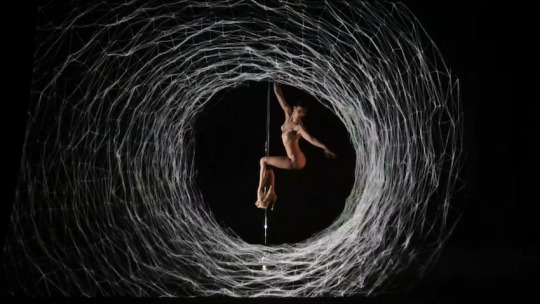
MOST CREATIVE: Vertigo, a short film by mixed-reality artists Kristin and Davy McGuire of Studio McGuire commissioned by the London International Mime Festival. Four minutes of heaven as Kristin performs on a shiny pole, enveloped in a gossamer haze of digital images that are protected on to gauze. Stunning! Watch it here. Pic: Studio McGuire
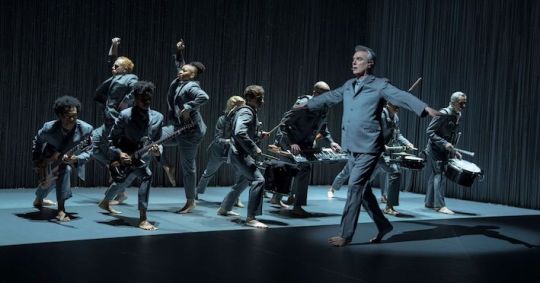
BEST SHOW: David Byrne’s innovative concert/dance production American Utopia.
BEST CHOREOGRAPHY: Annie-B Parson’s thrilling moves in American Utopia.
FAVOURITE ACT: The Shandong Acrobatic Troupe’s plate spinners from 2019’s Monte Carlo International Circus Festival. In a refreshing break from tradition, it used the main theme music from Wong Kar-wai’s 2004 film 2046. Also watch out for Laura Borrelli's hula-hoop cameo in the film The Hand of God.
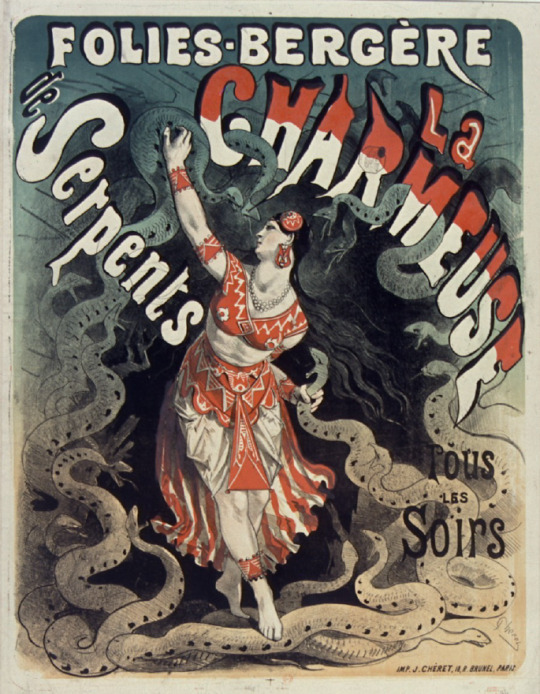
BEST TWITTER CIRCUS PIC: La Charmeuse de Serpents at the Folies-Bergère, posted by @PablosCircus.
BEST PROMO: Hula-hoop star Marawa the Amazing's delightful 'calling card', produced by her husband. Watch it here.
BEST SHOWBIZ STORY: Christine Walevska's stolen cello in The Tale of the Little Countess’ Little Cello on BBC Radio 4’s Outlook.
BEST SHOWBIZ TV SERIES: Hacks, with the incredible Jean Smart as a 'senior' Vegas stand-up comic.
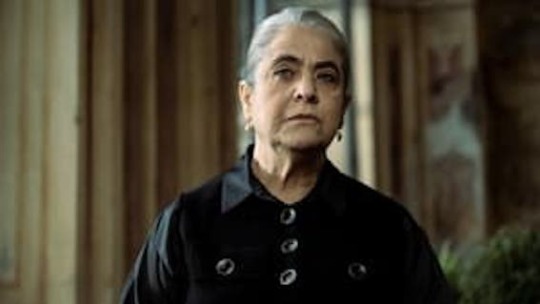
BEST TV CHARACTER: Nunzia Schiano as Donna Nunzia in Gomorrah, the Naples-set Mafia saga, which also gets MOST STYLISH TV SERIES for its breathtaking lighting and locations. BEST DOCUMENTARY SERIES: Fran Lebowitz’s Pretend It’s a City, directed by Martin Scorsese on Netflix. BEST INTERVIEW: Sylvie Guillem by dancer Daniil Simkin. Watch it here.
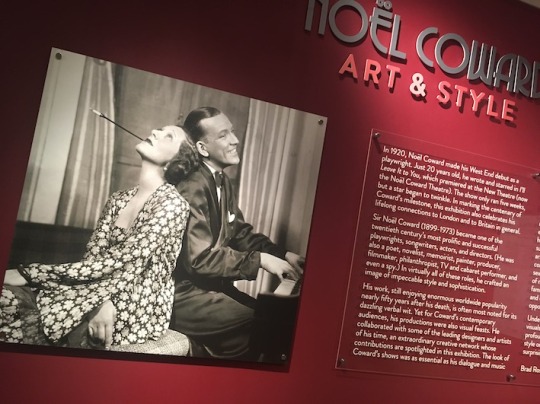
BEST EXHIBITION: Noël Coward Art and Style at the Guildhall Art Gallery in London.
BEST SERIES: Spending the War Without You: Virtual Backgrounds. Laurie Anderson’s stunningly intelligent Norton ‘lectures’ – in reality, shows – from the Mahindra Humanities Center, six of them given to the world for free!
BEST MUSIC: The score for the TV series ZeroZeroZero by Mogwai.
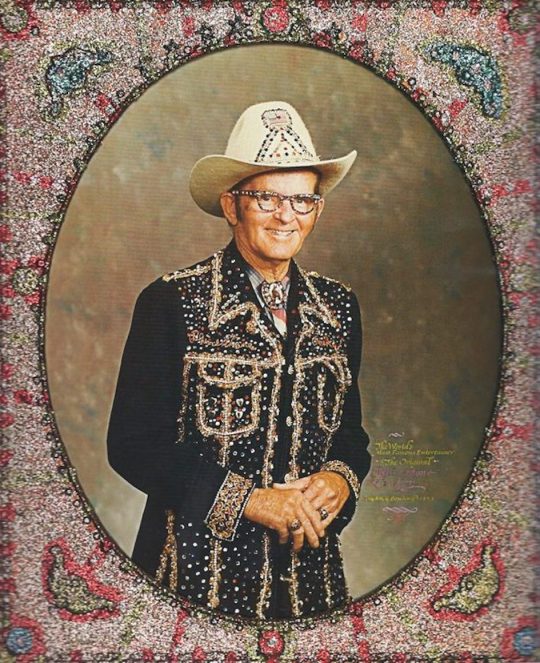
BEST WEEKLY MAILOUT: David Mills’ Quality Time – “a five-point bulletin of curated curious content” – in which he scours the world for things to interest, surprise and delight us. Above is the original rhinestone cowboy Loy Bowlin, who covered his life and house, the Beautiful Holy Jewel Home, in glitter, tin foil, tinsel and so forth. What could be more showbiz? Subscribe for free here.
BEST DANCE: The Ballets de Monte-Carlo White Darkness by Nacho Duato and The Lavender Follies by Joseph Hernandez.

BEST COSTUMES: Russian synchronised swimmers Svetlana Kolesnichenko and Svetlana Romashina’s spider-themed outfits at the Olympic Games. BEST FILM: Apples, a Greek Weird Wave first feature film from director Christos Nikou concerning… um… a different sort of pandemic.
BEST ANIMATION: Hungarian 1976 short Scenes with Beans, directed by Ottó Foky, about a cosmic metallic hen that lands on a planet of beans and observes their daily lives.

BEST DESERT ISLAND DISCS CASTAWAY: Sophia Loren, by a mile.
MOST FUN: Stump the Guesser, a short film by Guy Maddin, Evan Johnson and Galen Johnson.
BEST SHOWBIZ BOOK: My Rock ’n’ Roll Friend by Tracey Thorn, and To the End of the World, Travels with Oscar Wilde by Rupert Everett.
BEST BOOK: Two more memoirs share this spot… Farewell to Gabo and Mercedes by Rodrigo García, and Linn Ullman’s Unquiet. Both concern ageing and death, which leads us on to…
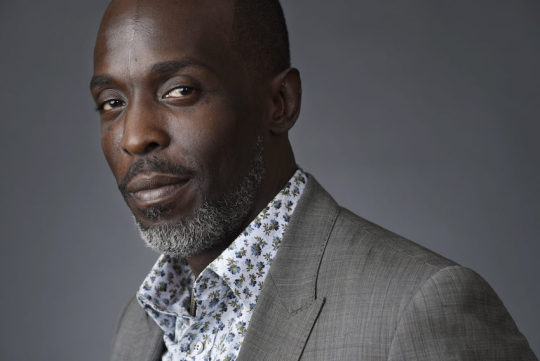
GONE TOO SOON: Mary Wilson of the Supremes, Mike Nesmith of the Monkees and actors Michael K Williams (above) and Helen McCrory. And those we knew personally: our friend circus impresario Gerry Cottle, Spymonkey’s marvellous and unforgettable loon Stephan Kreiss (below), and lastly Lord Christopher Laverty of the magnificent @clothesonfilm, who was one of the most knowledgeable, and certainly the best, speakers we’ve ever had the pleasure of listening to, who died desperately young in a canoeing accident.
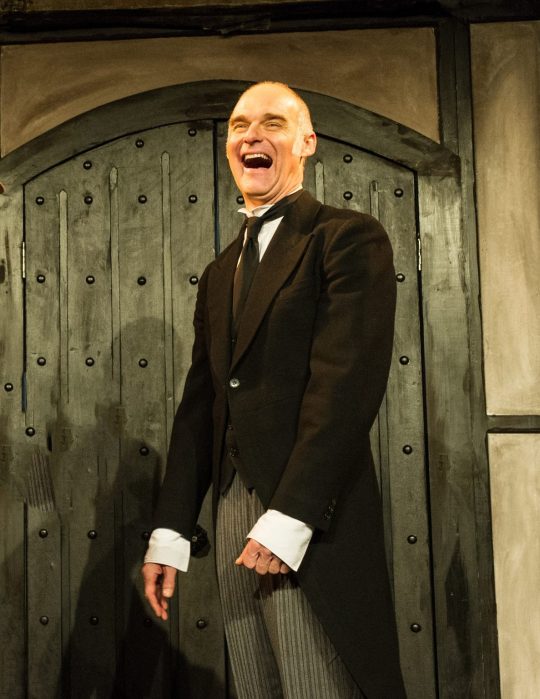
But so as not to end on too sad a note SPECIAL MENTIONS go to the Lucille Ball film Being the Ricardos, the kick-ass women in the TV series The Nevers, and the simply spectacular documentary House of Cardin, about genius fashion designer – among many, many other things – Pierre Cardin.
#Studio McGuire#Davy and Kristin McGuire#London international Mime Festival#david byrne#american utopia#annie-b parsons#bbc radio 4#gommorah#laurie anderson#noel coward#sylvie guillem#david mills#quality time#ballets de monte-carlo#mogwai#sophia loren#desert island discs#guy maddin#stump the guesser#Ottó Foky#gerry cottle#stephan kreiss#Lord Christopher Laverty#Clothes on Film#lucille ball#pierre cardin#rupert everett#tracey thorn#marawa the amazing
3 notes
·
View notes
Text
The best show I've ever seen: Odile Gheysens, Securintimacy
French choreographer Odile Gheysens is no stranger to The Widow Stanton, having been one of our first interviewees when she did an aerial performance in Dominique A’s Au Revoir Mon Amour video. Since then, she has taken her in-SENSO dance company around the world, specialising in aerial dance and tango with a twist. For her latest project, Securintimacy, she and seven other dancers spent two days training with the French Elite Forces to discover how they hone their teamwork. She also tells us about the shows that had a formative effect on her.
By Adrian Arratoon

The Widow Stanton: How did Securintimacy come about? Odile Gheysens: A long time ago I was in countries where there were wars going on, but when I came back to France I could do things like dance tango by the Seine, and I was thinking, 'Oh my God, there aren't any bombs here'. Tango is just two hearts dancing together, and I felt a strong ability to do things like taking a shower or putting some nail varnish on or just some simple things that you do because you feel secure and safe. Weirdly, the Covid-19 pandemic creates the same feeling of security or not; some people don't even hug their friends because they don't feel safe. It's really strange that an old idea I had was to work with the Elite Forces to learn some choreography about being safe.
Then, when the Bataclan attacks happened I was in a clown workshop, so every day I put on a red nose trying to find my clown; for me, finding your clown is really finding your inner child, so it's very intimate and challenging. And at the same time on the news they were talking about Bataclan, and I thought if some people had to deal with that, I could 'find my clown'.
What was it like working with the Elite Forces? I approached them via a personal contact and we spent two days with them. The people we met work in jails when there are riots. We learned how they enter a cell, how they subdue the people if they have to take them to the judge or to a court, how they have to act if there is a terrorist or someone hitting someone else, or when there is a big riot.
The interesting thing is the notion of a group because when you have the hands of your partner on your shoulder you focus on what you have to do. You cannot say, 'OK, let's go this way…', you have to feel what your partner is doing, and it's such a dance.

What was the main thing you learned from the Forces? The group relationship. If you are alone you're not safe; you're in danger and you put your partners in danger. So there is this notion, and in the body it's so strong. It’s really interesting, we did two days and after that we dancers improvised and two of the elite forces came with us and joined in. They said: "We cannot dance," and we said: "But do what you know. Do what you do in your job." All the movements they were doing were so special and precise, because it's their job. So we were transforming what we learned. We also did something where we formed a line holding a rope. We were wearing gas masks and we couldn’t see, very loud music was being played and we had a hand grenade in our hands – to make us concentrate. It was fake but we only found that out afterwards [laughs]. But I really felt that it was a live one so I had better be careful. The music was really loud, you can't see your partner and you have to change hands to pass the bomb along the line. So this created a very strong connection between the dancers.
They told us that our bodies moved really quickly because they train young men, and they are very clumsy. At the end we said to the Forces that we've come to see you, people hate you, people insult you and you as Forces maybe think us artists are lazy, or non-essential. We have clichés about them, they have clichés about us, but when we met something happened and we came to understand each other. It was a very strong emotion that we shared with each other.
So what will you be performing on 29 May? We're doing 10 minutes because there are 11 choreographers in the Fabrique de la Danse, and we are all doing short pieces from all our shows that we've developed in this special year.
In the UK it's been difficult for people to get together. How have you been rehearsing? In France you can rehearse if you're a professional, so we're lucky. We can be in a dance studio, we can move our bodies, no masks.

Now I must ask, what is the best show you've ever seen? When I was very young, before I decided to stop ballet, I saw Carolyn Carlson and Maguy Marin, and for me it was a big shock. I was 12, and after seeing the show I said, 'Ah, OK, I don't want to do ballet, I want to do that'. [Laughs] It was in Lille at the Opéra. Carolyn Carlson was doing Blue Lady, and Maguy Marin was doing La Jeune Fille et La Mort. For me this was a big shock. Carolyn is in a piece of fabric that is elastic, so she is somehow pulled around. I don't know, I pictured myself there; it was the body but not in a ballet way with beautiful movements, although I like ballet for what it is. And I've met her many times now, and she's very impressive; she's really someone.
And does she know how much of an effect she had on you? Hmmm, I don't think so, but I think she had an effect on many dancers. And I've worked with two of her very good dancers.
youtube
Was it unusual for you to have gone to see contemporary dance? No, my parents took me to ballet, opera and theatre many times. I also love theatre and opera. For me opera is one of the most complete arts because there is singing, acting, music, and I've been to Opera Bastille many times because it's close to my house in Paris, and I've seen so many of them I don't even know which one would be my favourite. Sometimes it's the music, sometimes the direction, sometimes the singers, but opera is something that touches me a lot.
And also there was the show Maria de Buenos Aires, choreographed by Gigi Caciuleanu, which features music by Ástor Piazzolla, and this was my first shot of tango. It was in a theatre in Roubaix. It was the first time I had really been affected by tango. It was a kind of opera/dance. Maybe if I saw it now I might find it kind of classical but at that time it was a strong experience. I haven't seen that many tango shows that allow us to transform tango. Either it's too much tango with dresses and heels or, I dunno, it's men and women 'fighting', you know?
A 10-minute extract from Securintimacy will be shown at Le Carreau du Temple in Paris on 29 May, presented by La Fabrique de la Danse. For more information click here.
#dance#choreography#choreographer#Carolyn carlson#tango#argentine tango#opera#theatre#best show#the widow stanton#odile gheysons#Maria de buenos aires#interview
2 notes
·
View notes
Text
Archive feature from 2012: Lynne Essex – The Lana Sisters

One of the UK's greatest-ever singing stars, Dusty Springfield, (pictured left) was born on this day – 16 April – in 1939. To mark the occasion we are posting one of our favourite archive features, which came about after a friend met Lynne Essex, née Abrams, (right)… in a swimming pool of all places. Lynne had been a member of the Lana Sisters – a "girl harmony act" founded by Iris Long (later known as Riss Chantelle) – who gave Dusty her first professional job.
By Liz Arratoon
It is common knowledge that a 1994 advertisement in The Stage launched the Spice Girls’ careers, but more than 35 years earlier another girl group, the Lana Sisters, placed an ad in that newspaper that gave a much greater star her entry into showbusiness. In 1958, roughly 30 girls applied for the vacant position with the close-harmony trio. From their shortlist, Lynne Abrams and Iris Long chose 19-year-old Mary O’Brien, who would later become Dusty Springfield – the White Queen of Soul. But in those early days, as Abrams – now Lynne Essex – remembers, she was their last resort: “I loved her dearly; she was lovely but I have to say she certainly wasn’t glamorous and was very awkward then.”
Long had started the Lana Sisters, and Essex explains: “I was the first girl Iris took after she saw me singing in a little cabaret at a holiday camp. She’d originally worked with Ivy Benson, who led an all-female swing band, and learnt the business side of things from her. We were the Iris Long Trio for about a year, then established ourselves as the Lana Sisters and were very successful. We’d done all the donkey work, the touring and summer seasons up in the top of Scotland to iron our edges out. We had lots of work and a recording contract with Fontana Records.”

But with the departure of another girl they turned to “their bible” The Stage. The ad said [something like] ‘Well-established female singing trio, the Lana Sisters, require another member. Please apply by letter, enclosing a photograph’. A photo was vital, as Essex points out: “You can’t look like the back of a bus in this business and we didn’t have all the facelifts and things then.”
Thirty were whittled down to a dozen. “One particular girl seemed OK but we didn’t like the look of her photograph… and that was Dusty, or Shan, as she liked to be called. We’d auditioned the others and for whatever reason, they were useless. They couldn’t sing the harmonies, they couldn’t hold the notes; they were maybe very pretty but not up to it. In desperation really, I said to Iris, ‘Well, we’ll just have to have a look at this Mary O’Brien. She plays guitar and can sing. We’ll have to phone her.”
A rehearsal studio was booked in Leicester Square for 5pm and on a chilly day the girls waited. Five o’clock came, five past came, ten past, quarter past, with still no sign of her. “We thought, ‘She’s going to be useless; she can’t even keep time’. But as we walked down into the street we saw this little bundle of fake-fur coat coming towards us.” Full of apologies, Dusty, who was living in Ealing with her parents, explained she’d been delayed on the Underground.
Essex and Long returned to the studio to see what she could do. “We gave her an idea of the sort of songs we sang and, of course, when she started to sing she could do the harmonies off the top of her head. I could tell she had a very good voice, a unique voice. I said to Iris, ‘It doesn’t matter what she looks like, we can do something about that, and her stage presence’, which was pretty ghastly.” The Lanas were playing the Metropolitan Theatre in London’s Edgware Road, and decided to rehearse her running on and off stage. She managed that “without falling over��� and they took her.

Dusty had only previously played tiny clubs in the West End with her brother, Dion. They played Latin American music and she would sing in Spanish. Her first professional appearance was with the Lanas at a show in Lincoln. Essex recalls: “All the big names of the day were there. We used to dress in lamé trousers and high heels, which were quite raunchy for those days. We weren’t twee like the Beverley Sisters. We had three minutes to get onstage down some pretty nasty concrete stairs. Dusty tripped, of course, fell, and tore the front of her lovely blue lamé trousers.”
After that inauspicious start, things went well. “She definitely improved our sound but it was a terrible shame that Iris wouldn’t let anyone sing the solos. We’d sing in unison. Dusty was only allowed to sing the bottom harmony, Iris sang the melodies and I sang top harmony, but to have a girl in the act with such a tremendous voice, it was criminal. They all have individual mics today but we had one central mic. You couldn’t wander off and sing on your own.” Long also wanted them to look similar and they had their hair dyed blonde just at the front by Raymond, Mr Teasie-Weasie.
The Lanas may not have matched the dizzy heights of Dusty’s later success but they were right up there with the likes of their “arch rivals” the Kaye Sisters. They did big summer seasons and their famous records include (Seven Little Girls) Sitting in the Back Seat and My Mother’s Eyes. They were the only supporting act for Nat King Cole’s London date at what is now the Apollo Victoria Theatre. “We did an awful lot; a whole series of Six-Five Special and a series of Ready Steady Go! on TV. And we’d play the American air force bases at home and in Europe.”

Dusty stayed with the group for two years but when the end came it was sudden. “We were always together and it was very strange. We were playing Taunton in Somerset and Dusty kept disappearing. At the end of the week she said, ‘I’m sorry girls but I’m leaving’. She set up the Springfields with her brother, now Tom Springfield, and Tim Feild. We couldn’t believe it. It was just before a big summer season with Adam Faith, John Barry and Emile Ford. They’d been rehearsing in a field and it was springtime. To this day I don’t know if that influenced the name. She’d gained an awful lot of experience with us and had all the grounding. Quite rightly she decided she should be singing the solos. It didn’t take long before they became very famous. That’s when she changed her image.”
But Essex says they had nothing to do with Dusty’s trademark blonde wig and heavy black eye make-up, and reveals: “She didn’t like her hair colour, which was red, and she didn’t like her looks. She thought she looked like Peter Ustinov.”
Six months later Essex met Arthur, her husband to be, got married, left the Lanas and had two children, Amanda and Michael. Iris changed her name to Riss Chantelle, found two new girls and started the Chantelles. Dusty and Essex, as close as real sisters – she was Amanda's godmother – stayed in touch until Dusty left for America. “Even today I have to pinch myself to think that I actually did take this young lady on. When I hear one of her records it just amazes me that that little bundle of fur that ran across the road, looking like Peter Ustinov, turned out to be such a huge, huge star. I’m so chuffed. I can’t believe I was part of it.”

Pictures of the Lana Sisters and the one above courtesy of Lynne Essex
A version of this feature first appeared in The Stage
#lynne essex#dusty springfield#lynne abrams#lana sisters#show business feature#1960s music#kaye sisters#Teasie-Weasie#riss chantelle
7 notes
·
View notes
Text
Josie Stone: costumier
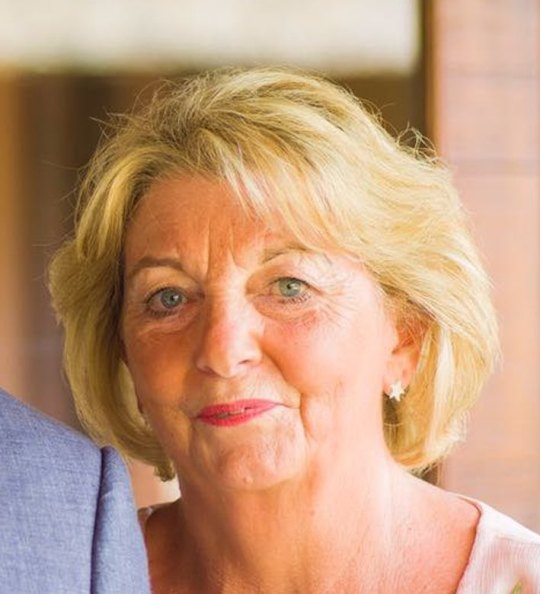
Costumier Josie Stone was born in London and lived and worked there most of her life but is now based in Rochester in Kent. She’s been in the business “going back to the Flower Power days of the sixties” in London’s King’s Road, and worked for a lot of up-and-coming pop groups, selling clothes to Tommy Roberts’ Kleptomania in Carnaby Street. She made fashion samples for designers Paddy Campbell and Katherine Cusack, and one Christmas Liberty’s department store had windows showcasing Cusack’s dresses – including one for Diana, Princess of Wales – all of which Josie had made. She also created samples for adverts in the boutique Medusa near Sloane Square.
Later Josie moved into the entertainment industry, making outfits for both the children’s and adults’ Royal Variety Performances, as well as doing TV work for the Des O’Connor Show, the Michael Barrymore Show, the Lesley Garrett and Frank Skinner shows, TFI Friday and for organisations such as Butlins and Bassline Circus. She’s made costumes for shows on cruise ships and for films such as Mamma Mia: Here We Go Again, and has made those for Thursford Christmas Spectacular for many years. Even though Thursford always credits her work, her considerable contribution to the industry has largely gone unrecognised.
She is performer Becky [Rebecca] Burford’s mother, and her son-in-law is stunt man Andrew Burford. The Widow’s Liz Arratoon has always regarded costumes as a vital part of any show and was delighted when Josie agreed to chat about her impressive – and lengthy – career.
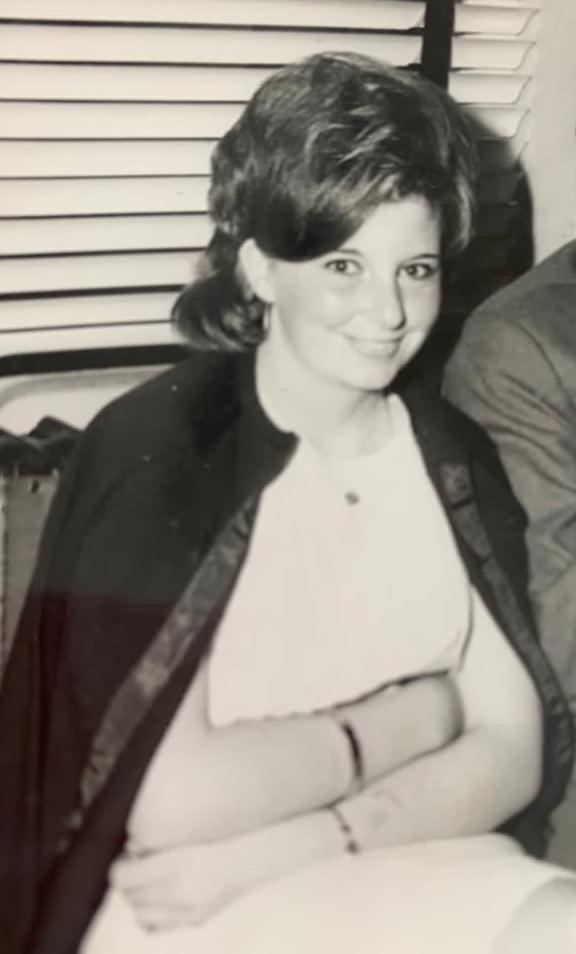
The Widow Stanton: Have you always loved clothes and fashion? Josie Stone: It was always in me. I was one of these kids that when my mother and father bought me a sewing machine I made all my dolls’ clothes.
Was this skill in your family background? No, my mum was very good at sewing… very good. But no they didn’t do this. My father was a printer. I learnt a lot at school and a lot from my mum. I didn’t go to college; we had lessons at school for making… millinery classes and also sewing classes.
That’s amazing! We had sewing classes at school but we never learnt anything worthwhile. How did you start out actually working in the industry? I left school and went to a couple of places making shirts but that didn’t last long. Then I met up with this guy who had his workroom above Tesco’s in Victoria. He was very keen to start making… it was like Flower Power days but you couldn’t buy shirts and trousers and things like that for the pop groups. Those sort of things just weren’t around. So I went to work with him. It was a rented flat he lived in and we were all working in there making these things. Then he suddenly got this place down King’s Road in Chelsea called The Potato Shop; on the corner in World’s End. At the time Granny Takes a Trip was just down the road from us, with this American car sticking out the window that appeared to crash through on to the step. It was great! I mean good fun, great fun!

Do you design as well as make? No, I don’t design. I get a drawing and that’s it. It depends on who the designer is… sometimes you get ‘I want that at the bottom, I want the skirt to look like that and the top to look like that’.
Can you remember any of the pop groups you worked for? [Laughs] No! You’re talking a lot of years ago, lots of years ago. It was any group that was starting out in that industry and they had nowhere to buy their things. We would buy Indian bedspreads and make them into kaftans, sailors’ trousers, dyeing them all different colours and altering them, and frilly shirts that would be sold to the antique market at the Sloane Square end of the King’s Road, near the town hall. We had one floor in The Potato Shop and there were crazy carryings on downstairs in the basement. We didn’t really know what it was all about but it was a bit naughty. One night we sneaked back into the place and worked all night so this guy could get his order out.
We always hear about the Swinging Sixties… how much fun was it? Oh, King’s Road was lovely. Beautiful, beautiful. It was a wonderful place to be in the sixties with all the Flower Power, then the punks. It was great fun; it was wonderful fun. It was all unknown to me; it was all new and that was the start of me getting into that type of work. My dad worked just off of Carnaby Street and he got us work from Kleptomania, a big, big place where all the pop groups used to go. We’d be making more kaftans and shirts with frills all down the sides and the centre. There still weren’t many shops around that were selling that type of thing. Tommy Roberts would sell to people like Jimi Hendrix and The Who. It was just fun. [Laughs] I was a single girl having great fun going from one place to the next, really.
After that I worked in a boutique called Medusa. I was downstairs making samples all the time. I didn’t used to do much production. Mainly I’d make a sample up and then if they liked it it would go off to wherever, to a factory or somewhere like that to do production. Medusa was a swinging place, it was in a little alleyway off the King’s Road next to Sainsbury’s. I believe it was called Elystan Place. It was an up-and-coming boutique. That was at the time when Zandra Rhodes was big, and those sort of people. One time we made some samples for Apple Records, the Beatles’ label, but it never came to anything.

What was the best part of your life then? I was young and having fun and it was all the unknown. I lived then in Wandsworth Road with my parents, and these were all Chelsea people and they were different, completely different to the life I’d led, and it was just really way out, anything went. It didn’t matter what you wore, anything went. And I loved my job. I’d work any hours because I loved it. I didn’t always like the places, I’d go from job to job, but I did love my work and I then started having my own workroom. I decided I’d work from home. I worked with a friend from my first mother-in-law’s house and we were still doing the kaftans… a guy used to pull up in this black cab that was all painted with psychedelic patterns. It was at Tulse Hill – they were very quiet there – and the neighbours used to look in absolute amazement at everything going on. But we loved it, my mother-in-law loved it and it was good fun.
So, let’s jump ahead, how did the Liberty’s window display come about? I worked for somebody called Katherine Cusack. That was just when Rebecca was born and I was working from home. I think Katherine advertised in The Stage and she wanted to start doing semi-couture work. I’d make her samples and then she’d have a party and invite all these quite wealthy people to her lounge. It was a beautiful Edwardian house in Grafton Square in Clapham Common. Then she managed to get into Liberty’s and that Christmas the whole front had all the dresses that I’d made.
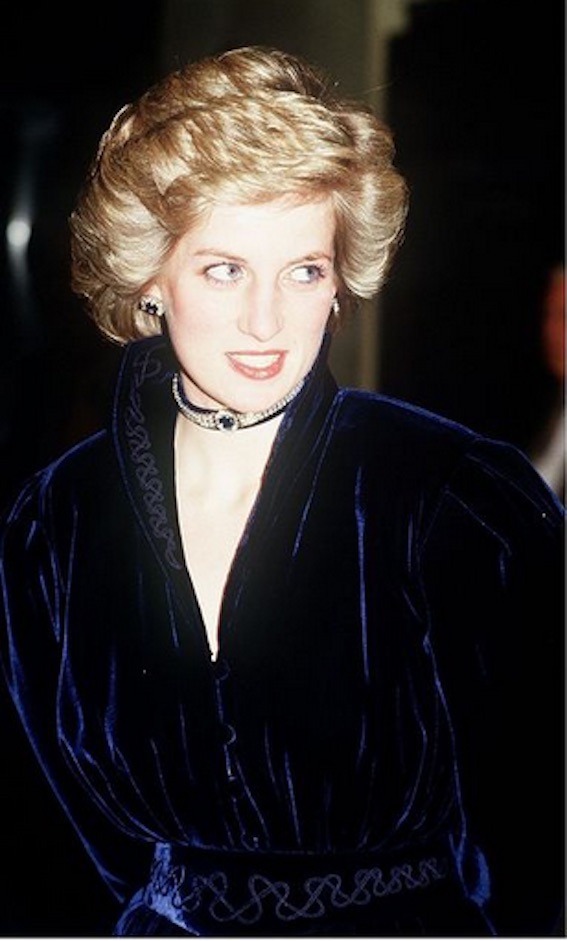
Which of Lady Di’s dresses did you make? It was a beautiful silk velvet in a beautiful deep blue. It had long sleeves and rouleau loops with little buttons all the way down. I think Di went into Liberty’s and bought it. I believe she was photographed wearing it for The Lady. Katherine was over the moon. But it was real pain to make because silk velvet takes its own route. It’s not the easiest of fabrics to work on because it’s so soft. It is beautiful but it’s not easy to make. You’ve go to have the right feed on your machine otherwise when you’re joining the seams up you’ll lose it and it will be longer one end. Josie! That dress was later auctioned for thousands and thousands! £48,000, I believe.
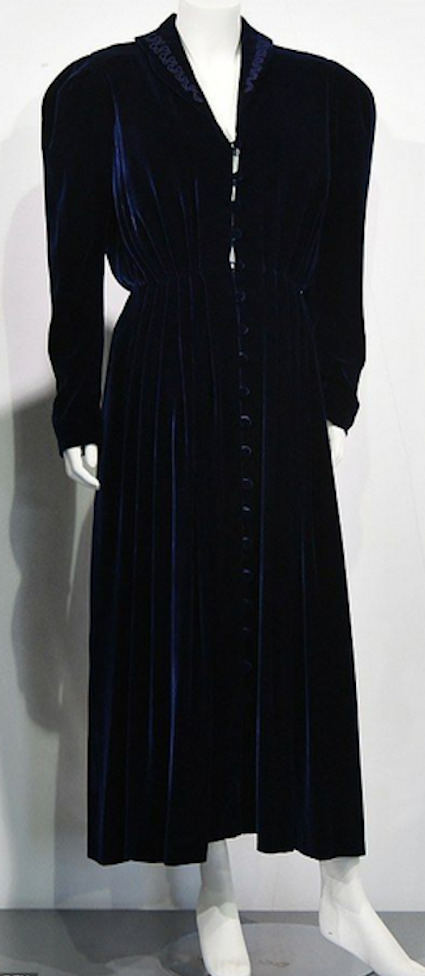
How did you make the move into showbusiness? I moved into that when Rebecca started at Sylvia Young’s. They used to put on shows all the time because it’s a theatre school and I started making costumes. Then I went on to doing the children’s Royal Variety.
Is that how you got on to the adults’ Royal Variety Performance? I’d got into a workroom at Acton doing samples for someone I met on the children’s Royal Variety. Then I went into my own workroom at Acton and I used to help her out. Various different designers got my name and we took on the work. That’s how we gradually started doing all the shows. She didn’t want to go on the shows so I used to go to the studios or anywhere where the work was and I’d fit the costumes and then come back and we’d finish them, but she stayed in the workroom to do whatever needed to be done there.
Can you tell us about any really nice celebs you worked with? Oh God, who haven’t I met? [Laughs] I worked on the Royal Variety for years with a wonderful designer called Linda Martin. That’s years and years so that’s one helluva lot of people I’ve met. Des O’Connor was sweet. He was lovely, lovely, absolutely charming and so was his wife. We used to do a lunchtime show with him. I did that for a lot of years. Michael Barrymore was also lovely. I was really upset when he went off the scene because he was a nice guy.
Does anyone else stand out? There’s very few that weren’t nice. They were all very nice. No one was horrible. I worked on Michael Barrymore’s show at Wimbledon Theatre and there were so many celebs on it that they had to share dressing rooms. This one particular share was with Warren Mitchell and Chris Eubank. And Warren Mitchell didn’t want to share with Chris Eubank at all. At the time Chris Eubank had this electric scooter that he would go all round the corridors on it. I could understand Warren Mitchell not wanting to share with him because he was a bit wild at this point. He’s the only one I can say wasn’t very pleasant, but I think it was because he was unhappy about sharing because he and Chris were complete opposites.

Do you know how many years you’ve done Thursford for? If we go this time, probably 20 years. The designer I work with there is Stephen Adnitt; he was Cilla’s designer. I worked with Linda Martin for 12 or 13 years doing Thursford. I’d never met Stephen, I knew of him, and he asked me to join his team. The designer gets the job and they’ll have a team and usually they keep that same team all the time. I’ve worked with him for eight years.
How many costumes might be involved in its Christmas show? We have to dress everybody at Thursford, even the orchestra. So you have 56 singers, 23 dancers and almost two full orchestras.
So when would you start to plan something like that? We – I work with Rita Best – would start end of May, beginning of June. Our designs would come in before then. We’d measure people and make the costumes and fit them in September. There are probably eight or nine sets of costumes to make. It’s enormous! Enormous. It’s the biggest show I think in Europe. We’d spend three weeks in Norfolk just making sure that it all works on the set; making sure that sequins don’t come off – I mean it’s covered, absolutely covered in sequins – and we’ll be sitting for hours and hours sticking them on. But again, we love it. We’d see the rehearsals and the preview and the day the show starts we’d come home. Our job was done. When I was working for Linda there, I’d be there working late at night. That didn’t happen so much with Stephen. He’d be like: “We’ve got to finish now.”
You mentioned doing millinery at school so do you do headdresses and that sort of thing? No, I would have liked to have done but for Thursford we have a milliner who comes with us; Shirley Davis, who has also been in the business a very long time.

What advice would you give to someone wanting to follow in your footsteps? Get into a workroom and learn how it goes. Learn how people work because what they learn at college is not how a workroom works. And really to earn any money at it, you’ve got to have a bit of speed on the machine. You can’t hang about. You can’t take a week or two or three weeks to make something. It’s nice if they can get into a workroom and see it first hand. I mean I get my work through various designers that I’ve known over the years or another maker who will ring me up completely out of the blue. Last week I helped someone out on a film. I’ll work on anything that needs a costume. I did Red or Black? at Wembley Arena, a game show developed by Simon Cowell. You could win a £1 million. It was massive. I worked with another designer called Scott Landridge, who did the children’s TV series The Worst Witch, the TV series Mile High and the sitcom Citizen Khan.
Have you had any costume disasters? Not really. [Laughs] I’ve had a lot of late nights or working all night to finish a costume off. You get the occasional broken strap and you have to quickly run down to the stage or on to the set and pin them up, or something doesn’t fit when they arrive. But no major disasters.
Have you been doing anything during the lockdown? Just before the lockdown we had all these shows on cruise ships lined up but that all went. At first I was making scrubs for the hospitals. I did loads of voluntary work for anyone who needed them. Sometimes they gave me the material and sometimes I’d provide it. They were using all kinds of material in the end, even bedspreads. I did that for a while and I also made these little pairs of hearts. They were to send to hospices and hospitals so the patient could have one to hold and the family would have the other one. I made them out of all the material I have here. I also did masks, but I’m not doing so many now.

Do you ever think about retiring? No! [Laughs] I love what I do. But the work will get less and less and that will be it. I mean we’ve had hardly anything this year. We did a few bits for Butlins and a big Dame’s costume, which I don’t think ever got used because that show was cut.
Can you pick out a few career highlights? I loved working on the Royal Variety at the Royal Albert Hall. I loved doing it in there. I did that quite a few times. Beautiful, beautiful. It’s a beautiful building and it’s just lovely to work in. If you look back at all the names that have been on the Royal and I did it for more than twenty years, there are a hell of a lot of names I’ve met. And that was quite fun.
Josie is hoping that Thursford Christmas Spectacular in Thursford, Norfolk will go ahead this year. If so, it will run from 9 November – 23 December 2021 at 2pm and 7pm.
In the meantime she can be contacted on 07956 832261 for commissions.
For Thursford tickets click here
youtube
#josie stone#costumier#kleptomania#tommy roberts#swinging sixties#king's road#granny takes a trip#thursford christmas spectacular#royal variety performance#Becky Burford#andrew burford#diana princess of wales#Katherine Cusack#Scott Landridge#shirley davis#linda martin#rita best#stephen adnitt
2 notes
·
View notes
Text
Carol Gandey, circus director: Gandeys Circus and Gandey World Class Productions
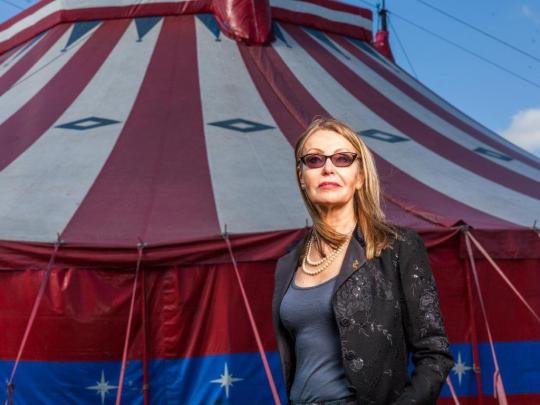
Circus director Carol Gandey – of Gandeys Circus – was The Widow’s 2020 Person of the Year, chosen for her for sterling efforts to keep touring circus as a viable artform in the UK during the Covid-19 pandemic, and also for the inspirational work she undertook in securing a large grant from the Arts Recovery Fund with what it termed an “exceptional” application. She has worked in what is a male-dominated industry for 45 years. Carol chats to Liz Arratoon about the problems Gandeys faced last year during the lockdown, and its plans for 2021.
The Widow Stanton: Which shows did you have running or in the pipeline? Carol Gandey: Gandeys had produced three shows pre-lockdown – we had shows in Hong Kong and Singapore, but in December 2019 word was filtering in about Wuhan. Hong Kong closed early because of it. The third show, Gandeys Circus Unbelievable Tour, started touring in the UK in February and was closed two weeks later. The costs of these closures were substantial. At that time we also had Circus Starr in the UK, Gandeys in Malaysia and the theatre and cabaret tour of the UK with the Lady Boys of Bangkok in pre-production. These shows were never opened.

How did the virus most affect you? 2020 was a challenging year for everyone within circus all over the world. Anxiety over loved ones catching the disease – families could be anywhere worldwide when tours were cancelled – was utmost in people’s minds. Our tour in Hong Kong was cut short and lost money. We had to bring artists and equipment back to the UK, and repatriate overseas artists, all of which was challenging.
Production costs and losses ran into hundreds of thousands of pounds. In addition we refunded tens of thousands of pounds in advance ticket sales. Artists were stranded in the UK as flights home were cancelled and borders closed. They had no redress to public funds and so no income. Suppliers who were owed money included local authorities, who were owed rent for sites agreed for 2020. But we were grateful for the help given by the government for the furlough of PAYE staff and the local authority money for rated premises.

What happened to the artists who couldn’t get home? I’m fortunate to live in the countryside, and Phillip [Gandey] and I were able to provide accommodation, electricity and living expenses for them. Thirty-three people lived with us from March until July. They were exceptional, taking the lockdown very seriously and restricting visits to the ‘outside world’. They concentrated on rehearsing and practising new skills. We erected a tent in the fields with an outside trapeze rig. The weather was great and they made the best of their confinement. I would say that given the circumstances this was a happy time; not one they would have hoped for but they were amazingly good natured and positive.
How did you begin to consider the logistics of reopening your shows? We felt we were in a unique position to be in the vanguard of reopening events and so closely followed the science around the transmission of Covid and produced air-flow plans to submit to the Association of Circus Proprietors and the government. We worked alongside Butlins to produce a working model to allow the circus to trial an opening at its resort in Skegness. The test showed an air-flow pattern that gave the government the confidence to allow circus to open in reduced-seating-capacity circumstances. This meant we could engage our artists and others in the UK to perform at Butlins’ three resorts over the summer.
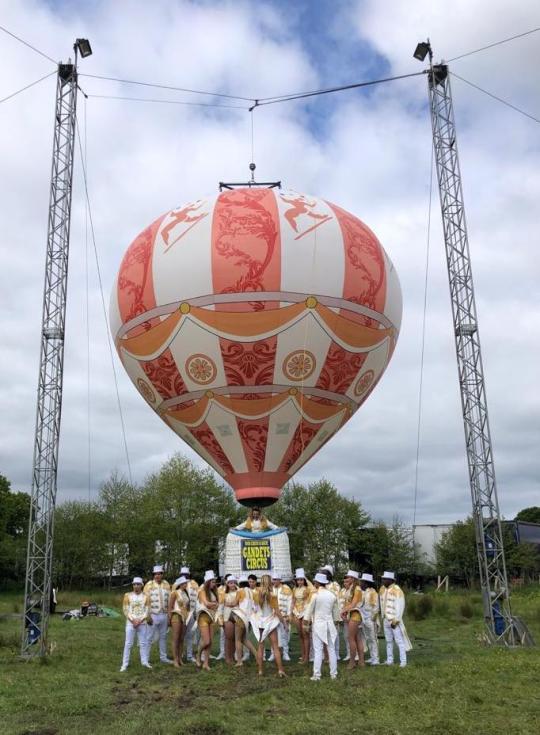
The government took a very long time to help the arts in general. Did you have a plan? Throughout this period I was lobbying the government and the Arts Council, and anyone on an email list, to support circus as a relevant artform that provides quality skills in performance, social and economic benefits along with a lot more. I had been collecting and collating statistics on this for some time to be able to produce fact sheets to support my claims. Other industry people had been simultaneously lobbying. We were thrilled to see circus included in the Arts Council Recovery Fund. I applied for Gandey Productions for a grant to cover the losses incurred during 2020 due to the Covid lockdown, plus a survival package to include some performances last autumn at reduced capacity, and the production costs for opening again this year.

Gandeys was awarded the biggest grant – £1.1million – of any UK circus company. Why do your think application stood out? I imagine because we are the largest operator in the UK and produce shows for export. We had invested heavily in productions pre-Covid and had commitments to third parties moving forward that benefitted the artform and many communities. We have a commitment to affordable ticket pricing and supporting social projects alongside fundraising for local and national charities. Further, and importantly for an Arts Council Fund, we produce to a very high standard, our artists are internationally acclaimed and our production values are significant. What does this recognition mean for the circus industry? I believe the support of circus by the Arts Council is a dynamic and profound change in funding that will bring circus as a performing art closer to the mainstream public in the UK. Circus is possibly the most accessible artform to the wider population geographically, socially and financially.
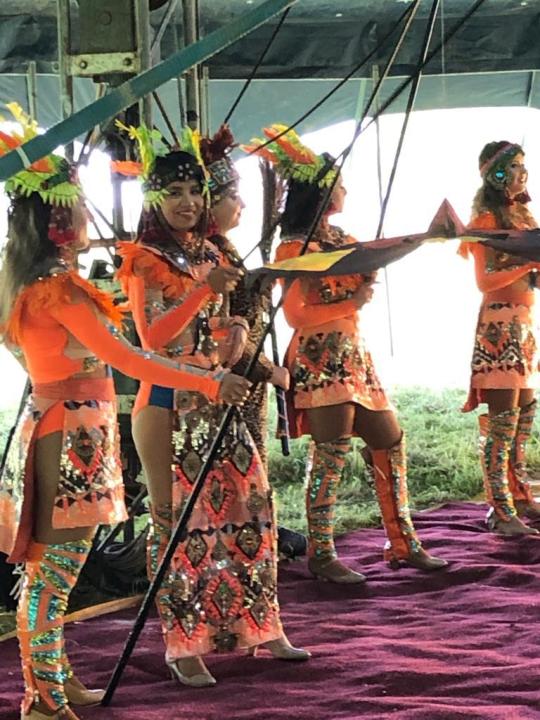
How might Brexit affect the industry? Who knows yet? There is still a lot of small print to be reviewed, and however it works there will be more bureaucracy and uncertainty. Additional issues for artists will be the import and export of props and vehicles and the rules around members of the EU driving in the UK, which will impact on them travelling with their own vehicles and caravans. In addition there will be changes to insurances and health cover, and not forgetting the changes to the exchange rate due to Brexit. We are uncertain of those consequences after a period of relative stability. Artists looking at these barriers may decide the paperwork and risks are too complicated and prefer to stay in Europe. All this will cost more and ultimately reflect on the ticket price. This is always a worry for touring circus in the UK as it tries hard to be an affordable form of art. Yet another issue for us is that we operate annually in Belfast and are expecting some challenges working there as different rules will apply even though it is part of the United Kingdom. We have factored Brexit into our strategy for 2021 and beyond. We cannot stress the financial difficulties and the maintaining of a high level of morale over this period. However, we are resilient and we will keep looking forward in positive ways. And when I say we, I mean the whole team here at Gandeys, which includes our office staff, financial support, engineering and technical teams, production teams to include lighting designer, choreographer, music production, set and prop designers, and all the artists who have been so supportive with their attitudes and ideas.

What can you tell us about your plans for 2021? We have taken this time of closure to look forward to this coming year; to reimagine our productions, researching acts and skills and production techniques, and to consider and test new ways of working; logistically, digitally and financially. We intend to continue to communicate with our circus audiences, to improve training, safety and security and Covid measures, and to review and re-target our environmental and social policies and charitable work. We are a flexible organisation and will respond to the Covid directives of the government as best suited to our company and our audiences, always with the safety of others at the core of our operations.
See Gandeys Circus website and Facebook
#carol gandey#circus interview#gandeys circus#gandey world class productions#covid#Arts recovery fund#circus#butlins
1 note
·
View note
Text
The Widow’s best of 2020
Well… during a year when we haven’t been able to see many live shows we’ve still managed to find lots of things we loved. Here are some of them; live shows are indicated, otherwise we watched them online – our grateful thanks go to all the companies that streamed their productions for free – listened to them or read them. You’ll notice that our list includes lots of women and the occasional man.

But before that we start with a new category…
PERSON OF THE YEAR: Circus director Carol Gandey (pictured) of Gandeys Circus. If UK touring circus – an artform championed by The Widow’s Liz Arratoon for more than 25 years – is to survive Covid-19, it will be in large part to her. Gandeys had produced three shows before the UK’s March lockdown, two of which never had a chance to open, incurring hundreds of thousands of pounds in costs. It then provided accommodation and living expenses for 33 stranded artists, and meanwhile developed an air-flow working model for circus – trialling an opening at Butlins – which gave the government enough confidence to allow circuses to reopen with reduced seating capacities.
Carol constantly lobbied the government and the Arts Council for aid – as did other industry figures – and her application to the Arts Council Recovery Fund, which was said to be exceptional, resulted in a £1.1 million grant; the largest amount awarded to any UK circus company. Gandeys used some of the money to cover the losses due to the lockdown, and to fund a survival package that included some reduced-capacity performances this autumn, as well as funding the production costs for reopening in 2021.
From one strong and inspirational woman to another…
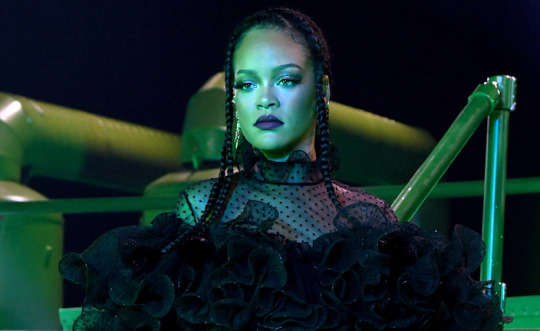
BEST EXTRAVAGANZA: Rhianna’s Savage X Fenty Volume 2 TV special for her lingerie range. Wow! What a mix! This was an explosion of creativity; part fashion show, part dance show, part gig, part circus, part ad, and included a simply stunning floral set. Add a cast of big names, a wonderfully diverse choice of dancers and models, no expense had been spared. Exciting, fresh and really impressive.
BEST LIVE SHOW: Zebra, a solo show by juggling genius Wes Peden, which was part of the London International Mime Festival at the Southbank Centre’s Purcell Room.

BEST CIRCUS SHOW: The really inventive CAPAS by Circo Eia (pictured) – so great to see so many new ideas, and here’s our chat with cast member Francesca Lissia. Plus the intricate and dazzling Twenty Twenty by Gandini Juggling.
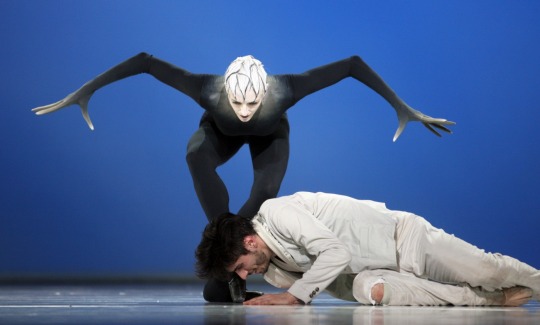
BEST DANCE SHOW: Faust by the Ballets de Monte-Carlo, featuring the spectral Bernice Coppieters (pictured) as Death; and Cia de Dança Deborah Colker’s super-stylish Belle, inspired by the novel Belle de Jour.
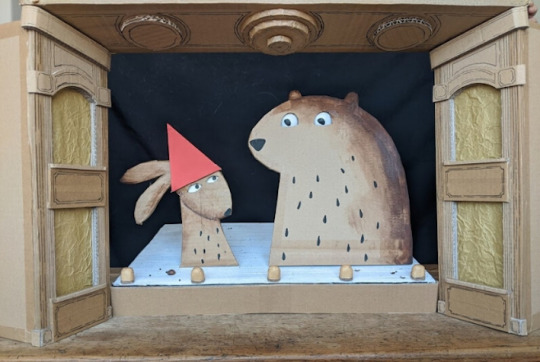
BEST KIDS’ SHOW: Little Angel Theatre’s hat trilogy, presented by puppeteer Ian Nicholson; an adaptation of the picture books by Jon Klassen: I Want My Hat Back, This Is Not My Hat and We Found a Hat.
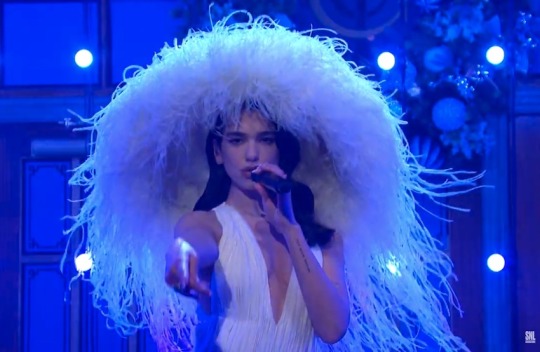
BEST COSTUME: The Widow has always considered costumes to be extremely important. As Federico Fellini said: “Don’t forget that costumes, like dreams, are symbolic communication,” and frankly we wish more artists would make the sort of effort Dua Lipa made on Saturday Night Live!

Staying with costumes… slightly less glamorous, but an effort was made by Hot Mess in party-sketch work-in-progress Dirty Stop Outs.
MOST EXCITING: Meeting Marina Abramović in the foyer at London’s Barbican before the Efterklang gig.
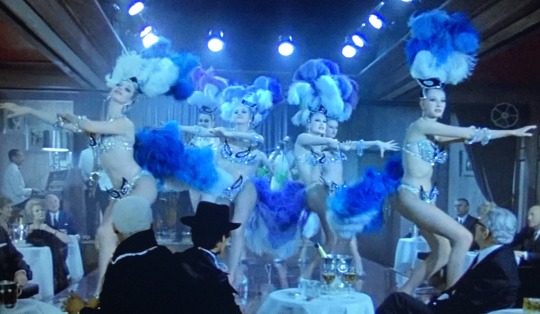
BEST SHOWGIRLS: Seen in the 1972 film Un Flic; costumes by Colette Baudot. Also featured is a stunning black dress, worn by Catherine Deneuve, designed by Yves Saint Laurent.
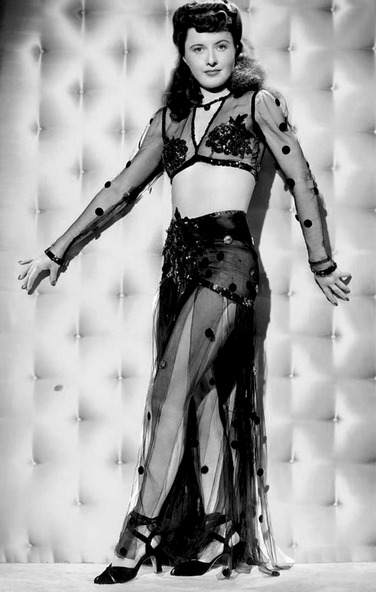
BEST BURLESQUE: Lady of Burlesque, starring Barbara Stanwyck, who wears costumes by the great Edith Head.

BEST FILM CREDITS: Sudden Fear, starring Joan Crawford as a scorned – but impeccably dressed – woman on the verge of a nervous breakdown!
BEST CASTAWAY: Hard to choose between Rupert Everett, Ian Wright or Daniel Radcliffe, who all washed up on BBC Radio 4′s Desert Island Discs.
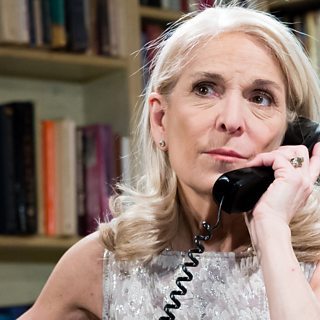
BEST SHOWBIZ STORY: Catherine Russell – on Outlook, BBC Radio 4 – who has played the same role for 32 years and said the same lines more than 13,000 times. She holds the world record for the most theatre performances in the same role; Margaret Thorne Brent – a psychiatrist who might also be a cold-blooded killer – in the off-Broadway play Perfect Crime.

BEST TV SERIES: It was a close call with The Queen’s Gambit, but our choice is the utterly brilliant My Brilliant Friend; the adaptation of Elena Ferrante’s series of Neapolitan novels.
BEST DOCUMENTARY: The Bee Gees – How Can You Mend a Broken Heart.
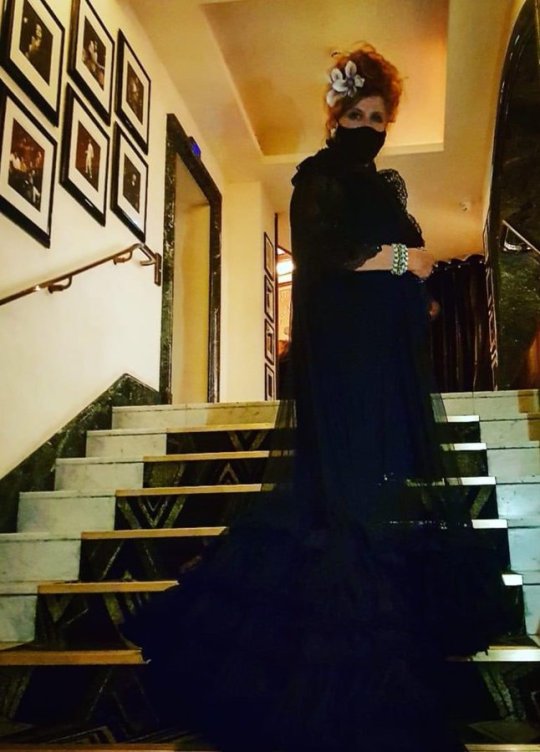
BEST CABARET PIC: The ever-lovely Eve Ferret at the Crazy Coqs in London. Picture: @marc_t_albert
BEST SHOWBIZ MEMOIR: John Cooper Clarke’s I Wanna Be Yours.
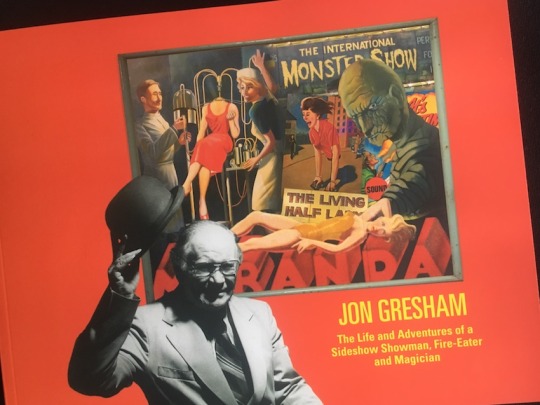
BEST SHOWBIZ BIOGRAPHY: Jon Gresham: The Life and Adventures of a Sideshow Showman, Fire-Eater and Magician by Edwin A Dawes, Pat Gresham and Jon Marshall. This is a painstakingly detailed and enthralling account of Gresham’s life, lovingly compiled by his widow and friends from material written by Gresham himself. Want one? Details below.

BEST SHOWBIZ AUTOBIOGRAPHY: The heartbreaking Everything and Nothing: The Dorothy Dandridge Tragedy by Dorothy Dandridge and Earl Conrad. The revealing autobiography of Hollywood’s first African-American sex symbol and screen legend.

BEST GIG: Sevdaliza’s only show this year, streamed live from The Hague's Koninklijke Schouwburg (Royal Theatre) to a global audience.
BEST SONG: Désormais by Charles Aznavour, which was used as the title track for the film Chambre 212 or On a Magical Night.
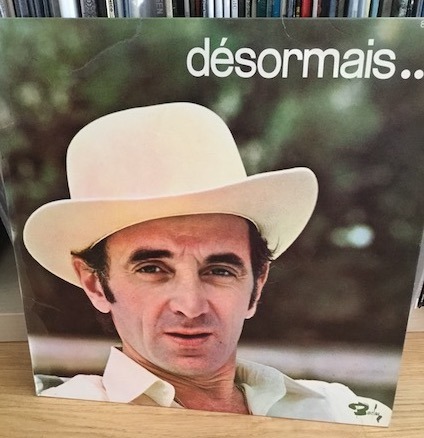
BEST ALBUM COVER: Charles Aznavour’s Désormais. That hat!
MOST CHARMING: The sheep invasion during Isabella Rossellini’s show Sex and Consequences, which was streamed live from her farm in Bellport, Long Island, USA. Yes, her live sheep!

BEST TWITTER CIRCUS PIC: The stunning Crystal Pyramids by Severus posted by @PablosCircus.
BEST LIVE COMEDY: Myra Dubois – star of Britain’s Got Talent – at The Poodle Club in Sydenham. Some of us recognised the greatness of Rotherham’s finest before she was famous!

GONE TOO SOON: Actor Chadwick Boseman (pictured) at just 43, funnymen Eddie Large, Tim Brooke Taylor and Bobby Ball, and dancer, choreographer and actor Ann Reinking.
MOST MISSED: Davenports magic shop that closed at the end of January – but you luckily can still order from it online – and a more recent casualty, after 96 years, London’s beautiful Café de Paris.

MOST DISAPPOINTING: Madonna’s Madame X show at the London Palladium. Goodness, this was shoddy! She was so incapacitated that she simply marked all the dance moves and had to be helped around the set, and up and down the stairs. The tickets were exorbitantly expensive and no one paid to see someone hobbling about onstage. We paid to see Madonna!
But let’s not end on a sour note…

BEST SHOWBIZ MASK: Shirley Bassey’s fabulous sequinned number!
REASONS TO BE CHEERFUL: Some things we’re looking forward to include: The 45th London International Mime Festival, which will be screening free-to-view videos of shows from past LIMF editions, running an extended workshop series with live and online classes, and hosting a series of talks.
We’re also awaiting the new series of Call My Agent, which starts on Netflix on 21 January 2021.
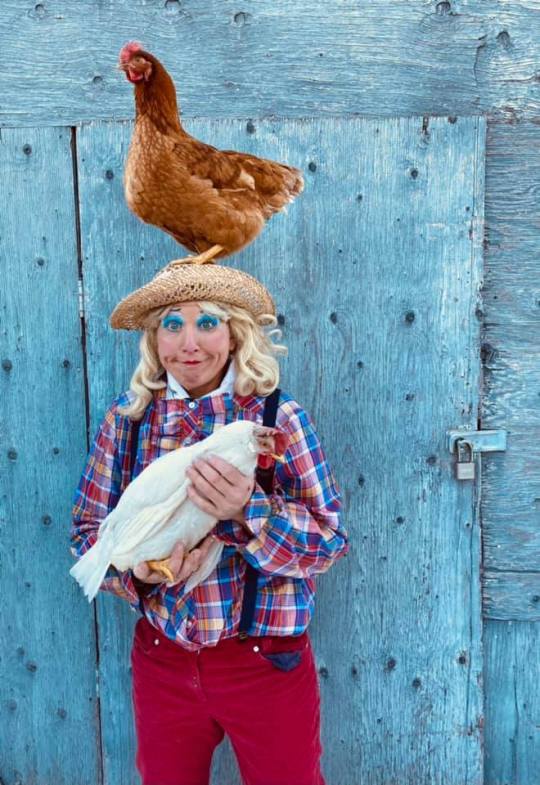
And, last but by no mean least, one of the world’s truly funny clowns, Gloria – also known as Mooky Cornish – has been busy training her chickens – Kukuruzza (pictured top), who has been taking piano lessons, and the athletic Galina – and will be touring the Canadian prairies with them next summer. Now that’s something we’d love to see! Picture: Nichole Huck
Better days ahead!
*Jon Gresham book is available via PayPal from [email protected]: P&P incl, UK – £25, EU – £30, USA tracked – $52
#best of 2020#showbusiness best of 2020#rhianna#savage x fenty#Wes Peden#Gandini juggling#circo eia#Ballets de Monte-Carlo#deborah colker#myra dubois#bbc outlook#desert island discs#eve ferret#john cooper clarke#Jon Marshall#sevdaliza#charles aznavour#desormais#isabella rossellini#davenports magic#carol gandey#gandeys circus#Mooky Cornish#gloria#madonna#little angel theatre#marina abramović#bee gees#shirley bassey#dua lipa
8 notes
·
View notes
Text
Andrew Burford, stuntman
Andrew Burford was born in Santiago in Chile, and for the next few years his family moved to Manchester and Argentina before settling back in the UK in 1996. He attended a contemporary music academy in Coventry and went on to tour internationally as a drummer. He also ran the entertainment agency Ents-Rep.

Andrew has been on the British Stunt Register since 2015, and has appeared in many prestigious films and TV programmes, including Star Wars, Game of Thrones, Doctor Who and Luther. His GoFundMe campaign for fellow stuntman Joe Watts – who was injured performing a complex stunt – has raised almost £47,000. Andrew appears as the stunt double for actor Ioan Gruffudd in the second season of Liar, which airs on ITV on Monday, 2 March 2020, at 9pm. He chats to Liz Arratoon.
The Widow Stanton: What is your connection to Chile? Andrew Burford: My granddad used to fly bombers during World War II and afterwards he got a job with British Airways in Chile, where my dad was born. My father is British and my mother is Chilean. Being brought up in a Latin household I was always listening to salsa and drumming music. When I was ten we had a neighbour who played drums and gave me a little lesson. He said I had good rhythm and I had more lessons and kept going. After music college I joined a covers band.
Why did you want to be a stuntman? When I lived in Coventry, where I grew up, I had some friends called Matt Cooke and Vince Lund, who have been film and TV directors ever since I’ve known them. They work as Popcorn and Co and are very successful. Between the ages of 14 and 18, we used to go to a summer school… every Saturday in the summer we’d go to this… I guess it was like a summer holiday camp, and every week we’d have to bring a new skill. So people would sing, people would juggle, people would write a poem.
We’d do a short film every week for something like eight weeks over the summer and present it like a five-minute short. I was the sportiest one out of everyone so I actually did all the silly things like falling down stairs, jumping out of a car or climbing trees. I didn’t know it was called ‘stunts’, it was just something we did. At the same time I was doing drums. So I’ve always done that sort of stuff and since that time I’ve wanted to be a stuntman. But I wanted to be a policeman as well when I was lot younger, and I was a special constable in the Met Police for a bit. I did that for four years pre the 2012 Olympics.
How do you actually become a stuntman? In essence you don’t have to do anything… if you are highly skilled, say you are an ex-Olympian and they’re looking for someone very specific to do a role, or let’s say you’re a rally driver and they’ve got a scene where there’s a big car chase and they need people who can drive to a very, very, very high standard, they may use people with specific skillsets for those sequences. But if you want to be an all-round stuntman the best way is to join the British Stunt Register and to do that you have to do six disciplines to a very high standard…

Can you choose them? They’re in categories of, for example, falling, so that would be like high-diving and trampolining, then there are vehicles… motorbikes, cars… and horse riding… martial arts…and you have to have six disciplines within the five categories. There are maybe 20 disciplines in total you can choose from. That alongside having live theatre experience or working in background on a film set as an extra. When I did my training, you had to have done that and I did extra work just so I could get on to the stunt register. You had to have 60 days behind camera as an extra. Every time you go on set, you get a piece of paper like a contract from production to prove it.
Which did you do? I did judo, cos you have to have a martial art, scuba diving, rock climbing, high diving, swimming and trampolining.
How long did it take you? It took me about three years. Basically I was training full time, doing two or three sessions a day, so I’d do martial arts, then I’d go swimming… there was always something I’d be doing every day. For example, swimming took six months of going every day.
Was there a discipline you found more difficult than the others? Swimming was probably the hardest because, for example, if you go trampolining you go twice a week and if you miss a week, you don’t fall back that much, but with swimming it’s very much a fitness and endurance test so you have to be at peak physical fitness throughout the whole period. So if you went a week without swimming…
For the swimming, you had to do an underwater test where you have to swim 25 metres under water, holding your breath, rest ten seconds and do it again. You have to do all the strokes within like, a county-level time. You couldn’t just be good at freestyle, you had to do all of them. Then you had to do more under-water tests, finishing with swimming fully clothed… shoes, socks, shirt, jacket, trousers… 100m in two minutes. It doesn’t sound that hard to do 100m fully clothed in 2 minutes, but after 45 minutes of other challenges, it’s super hard!
I remember you missing the test by a tiny margin… Yes, I did the test once and I failed it mainly because of the 100m freestyle. You have to do it in a minute and 30 seconds, and that was the first part of the test. I remember the instructor after my second 50m length was going: “Hurry up, hurry up,” so I really went for it and then I got to the end after the four lengths and said, ‘Did I make it?’ She was like: “You did it in a minute and 10.” And I was like what do you mean, 1.10, I want to do it in a minute and 29, not with 20 seconds to spare’, because obviously by then I’d exhausted myself and it had a ripple effect to all the other swims after that.

Were there any disciplines that came more easily? I’ve always loved martial arts although it takes longer, because you have to be a brown belt or above. It’s just more fun, so I enjoyed doing that. I also learnt trampolining and gravitated to that pretty well and I love it.
Tell us about some of the stunts you’ve be asked to do… My first time on Game of Thrones – it was all filmed in Ireland, season 8, the last season – I’d never worked for that team before. I was flown over to do some pick-up shots; basically they had an episode that was something like 50 to 60 days of nights, and I came on to the tail end of that. I think they’d exhausted all the faces by then so they needed a few new ones. If it had been any other show it would have been quite an easy job, which was just to get slashed round the throat or something like that.
It was my first day on that set, first time meeting the stunt coordinator, Rowley Irlam – he’s won quite a few Emmys for the stunt work he’s created – so it was quite a big deal for me. So there’s like, 200 extras there, 60 stunt guys, a whole crew of probably 100 and it was literally a small vignette of just me and another stunt guy slashing my throat and me reacting to it. Jobs like that are your bread-and-butter easy work, but because it was Game of Thrones and it was the first thing I’d done on it and it was just me with everyone basically watching me, it was the most nerve-wracking thing I’d done to date, even though it was technically an easy stunt. But I did it and it went fine.
Then once you prove yourself a little you get trusted to do more intricate things and towards the end of that season I did a full fire burn. I was burnt by one of the ‘dragons’, which was quite a big deal for me. There’s a scene where the dragon flies through King’s Landing and there are two turrets at the gate. I was on one of them, where we had a big bow and arrow-type thing, and the dragon burns the whole turret. They put a small explosion beneath your leg and the flame ignites your whole body. Obviously you’ve got fuel accelerants on your costume and you’re just in a full blaze. That was quite cool!
Could you feel it? No. When you do a full burn, it’s very dangerous, obviously, to burn yourself alive [laughs], but if anyone was gonna do it, this team were the best team to do it, because they’ve burnt more people on that show that anyone has on a TV series ever. There’s a science of how to do it, how to be safe and you obviously rehearse it over and over before you’re actually set alight, and then…

Is there a safe word or something if anything goes wrong? There’s not but basically if you lie on the ground like a letter T that indicates to your safety team that you need to be put out. That’s kind of your safe word. You have a latex mask on and that stops your face burning, but while you’re waiting you can’t really breathe apart from through a little hole in the latex where you can insert a small tube, so you can take little sips of air. The mask is pretty much glued to your face.
How long were you on fire? For maybe like, 20 seconds…
That’s a long time if you think of someone running the 100 metres. The thing is even when you’ve been put out, you’re not supposed to take any breaths because the fumes can still be really hot and burn your lungs, so you have to be fully out and when your safety team tells you you can breathe, that’s when you breathe. You haven’t only been holding your breath, you’re moving and also expending a lot of energy. In this case before we were on fire and holding our breath, we had to hold the bow and arrow above our heads, which was heavy, a good 80kg in weight between two people.
At the same time you’re trying to regulate your breathing prior to taking your last breath before the fire ignites you and having to think about your action. So it wasn’t just about the burn itself, there were so many different aspects to think about during it, all of which affect your ability to hold your breath. That’s when you put your complete trust in your safety team to put you out as quickly as possible once they shout ‘cut’.
You told me once about being blown up and having to land in the road without any padding to land on. I couldn’t understand that… That’s pretty much 90 per cent of our job, falling over on to concrete repeatedly… all the time.
How do you learn to do that? That’s where your training in trampolining and gymnastics or judo comes in. If costume allows it, you can put pads in strategic places to soften the blow but sometimes it’s inevitable and you are going to hurt yourself in some way, for example if you get hit by a car… it’s always going to hurt, but there are ways of falling so you minimise the risk of causing serious damage. But you’re always hitting the concrete, especially after a car knock-down, so there’s always going to be some element of pain involved.

Any other stunts you’d like to mention? Jumping out of a helicopter was a good one for a TV show called Discovery of Witches. It was from 50 feet in the air into an airbag. 50 feet in the stunt world isn’t really that high, I mean there’s people who have done 125ft falls into an airbag, and higher back in the day, but the difficulty with the helicopter is that it’s never static. So it’s always moving ever so slightly and you’ve still got to land on an area that is static, so that’s the element of danger in that stunt.
Talking about jumps from high places, have you seen the 1969 film Butch Cassidy and the Sundance Kid? Yes, when they jump it’s incredible. Back in the day they used to do crazy heights. There is one guy who’s done a 200ft fall on fire going out of a building, and that’s pretty incredible.
How are you chosen for stunt work? You might be a stunt double; if you’re doubling an actor, you might have the same characteristics or height and build. [Andrew pictured with Ioan Gruffudd below] Then you might have your bread-and-butter work where a lot of films might have armies… for example like 1917, you would have to have been a certain age and look for that period. Or things like Star Wars, you literally have to fit the costume that’s already been made, like a stormtrooper outfit, the height for that is 5’10 to 6’1.
You don’t have agents or anything like that, basically the film and TV companies will have a coordinator, someone who designs the action, and then it’s their job and their team’s to choose who might be right for each role and come up with concepts for what happens. For example, in a script you might see actor A and actor B have a fight in a pub, so they might need two doubles to double the actors, or pub punters, and they start building a team of people they might need for certain sequences.
A stunt coordinator is involved in all aspects of action for all sequences in the film and a fight coordinator would normally come up with all the different fights and styles of fights the actors and doubles might perform. They are also typically in charge of shooting a pre-vis, which is a pre-visualisation to show the director how they see the action taking place. If you go back to the pub scenario, the director might not know how he wants the fight to be, so it’s down to the stunt team to come up with ideas, which eventually become part of the film.
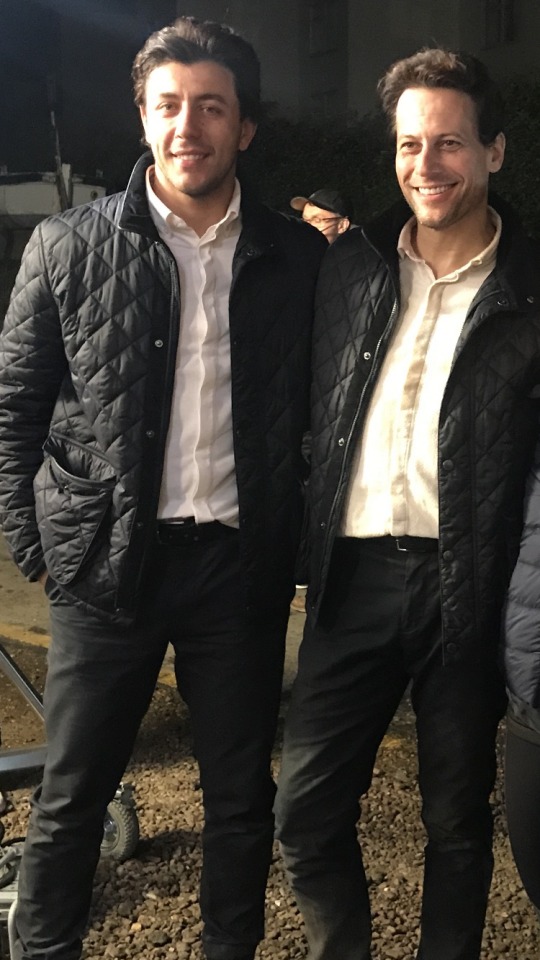
Do you have a typical sort of stunt day? Typically, especially when you’re in costume, you’re probably in for 7am and then it’s a 12-hour day, and then any overtime that might go on. 7 ’til 7 is quite common. There can be a lot of sitting around waiting for something to happen, more on films than TV. If you’re lucky, there might be a stunt area where you can rehearse your scene or just relax. For TV, you’re typically going in to do a specific stunt, so you’ll go in and do it and then go, but on a film there might be a lot more stuff going on, so you might have to wait a couple of hours or sometimes days until your spot.
What is your training regime now? I go to the gym most days, at least five days a week; weights, crossfit, martial arts. Obviously when you’re working it’s quite physical so it can be like training. I try to keep it as broad as I can because you never stop learning.
Have you ever been hurt? Yes, there’s always injuries. You’ll never find a stuntman who hasn’t had some sort of injury, but to what degree is the thing. Your bread and butter for a guy in particular in our job is like, fights or reactions. A lot of reactions might be someone shooting you, so you’re always falling on the ground, or you’re fighting with someone so you’re going to take some bumps and bruises. Hopefully none that are on purpose but sometimes things do go wrong on set where people get injured long-term or indefinitely, and those who do work quite a lot they’ll always have some sort of injury going on because it’s inevitable with the amount of work you do and the amount of falling over.
Has stunt work lived up to your hopes? Definitely! It’s fun. I’ve been lucky that I’ve been pretty busy since I started but I really miss not being at work if I have periods off. People ask about actors we come across, and although we work alongside them all the time, we generally don’t have that much interaction with them unless they talk to us because they’re very focused on what they’re doing. You don’t want to be that person who’s trying to interrupt, just like when I’m doing my stunt I don’t want anyone to interrupt me.
Is there a stunt that’s like the holy grail of stunts that you’d like to do? I’d like to do some more car stuff like crashing a few cars or a massive car turnover. That would be a really good one to do. Ultimately you have to have complete control of a car, so you have to be entrusted with doing the easier things first, like stopping on a mark or precision driving and from there, progressing to harder things like car chases and crashes. I’ve done a fair bit of the ‘easier’ stuff, I’m just waiting for the opportunity to get involved in the harder stuff. It takes time to build up a good rapport with coordinators as being someone who can be trusted behind the wheel.

Do you see yourself as a stunt coordinator in the future? I’m still very new and the industry is changing quite rapidly with new technologies that are being used, so I’d need a lot more experience working in teams on big films – typically 20 or 30 years – before I get to the point where I might be able to become a stunt coordinator but, definitely, I’d like to do that at some point in the future.
At the same time if you’re a good stuntman it doesn’t necessarily make you a good coordinator. They’re two sort of completely different jobs. Coordinators have to be able to read a script, break it down and get across what action can be done to bring the pages to life. A lot of people don’t understand how much goes into it; you’re not only looking after actors’ safety, but everyone’s safety on set. If you’re having a big car chase, you’ve still got 100 crew members around to consider who aren’t a part of the action. Coordinators have to be aware of that but also the designing of the stunts for all sequences in a safe manner. It’s a lot of pressure and not for everyone.
Are stunt men and women recognised for their work? This is a bit of a hot topic, like, the Oscars don’t recognise stunts as a category for an award. If you take Brad Pitt, who just won Best Supporting Actor – he was playing a stuntman in the film Once Upon a Time in Hollywood – but at the same time you can’t get an Oscar for being an actual stuntman. They have awards for best sound design, best costume, best casting, which are all valuable and integral parts of film making, but no more valuable than the stunt department.
As a stunt community, we don’t necessarily want stunt performers to be acknowledged individually but as a department we should be recognised just like all other departments. If you look at all the major film trailers, they all typically show big stunts as part of their two-minute sequence. It’s a key selling point for the film to draw the viewers in to see the film in cinemas or to buy the DVD. Yet they currently don’t acknowledge our department, which is why people are trying to get the Academy to recognise it as a category. They’ve been debating it for 25 years with no luck.
But there are the Taurus World Stunt Awards, which are awards given by your peers. So stunt people will nominate stunts, like Best High Fall, Best Wire Work or Best Car Work. That’s like your peers acknowledging that you’ve done a good job, which is great, but it should be more widely recognised. We just want the recognition we deserve from the major players. Gone are the days where stunt guys are just a few knuckleheads on set for a couple of scenes. The stunt department pushes boundaries of what's possible within a film and without it it’s fair to say many films wouldn’t have achieved the awards and accolades they have.
Andrew appears as Ioan Gruffudd’s stunt double in the second season of Liar, which airs on ITV on Monday, 2 March 2020 at 9pm.
Andrew on Instagram
Follow @TheWidowStanton on Twitter
#andrew burford#stunt man#game of thrones#star wars#liar#ioan gruffudd#stuntman#stuntman interview#itv drama
0 notes
Text
Evelyn Carnate, burlesque artist, producer and director
Known as ‘The Shapeshifting Showgirl’, Evelyn Carnate is the current Miss Burlesque UK. With acts ranging from the playful to the powerful and unpredictable, the neo-burlesque performer has been on the scene for five years. She has a naughty sense of humour and can play everything from sweet and subversive to sensual and downright twisted.
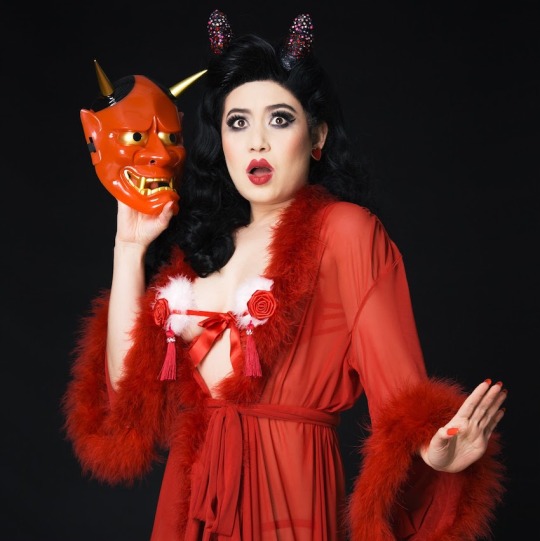
Evelyn is also a director, producer and teacher and one of the founding members – along with Lilly Snatchdragon and ShayShay – of the all-Asian cabaret collective The Bitten Peach. All the proceeds of its show at the Underbelly Festival in 2019 went to Rose Thorne’s Cabaret vs Cancer charity. Evelyn now appears in CvC’s fundraising event Ashes to Ashes – a cabaret tribute to David Bowie – at Bethnal Green Working Men’s Club in London on 26 February 2020. She chats to Liz Arratoon.
The Widow Stanton: Where are you from? Evelyn Carnate: I’m now from London but I’m actually half Thai, half English. I grew up in Thailand in Chiang Mai. I went to an international school so that’s why I have this kind of American accent. [Laughs]
Are you from a showbusiness background? I was always obsessed with dancing; I did a lot of ballet and all kinds of dance. I did so much that my parents ended up sending me to a full-time ballet boarding school in England for a few years. It was Arts Educational School in Tring.
Had your family moved here by then? No, my dad is from Bristol but he moved to Asia over 30 years ago and never came back. My family have always been in Asia so I came back on my own.
Did you get straight into burlesque? Oh no, not at all. After dance school I went back to Thailand, then came back to London for art college. I trained as a theatre designer at Central Saint Martins in London. And then I did acting classes on the side and I went, ‘Oh, shit! I’m an actor!’. [Laughs]
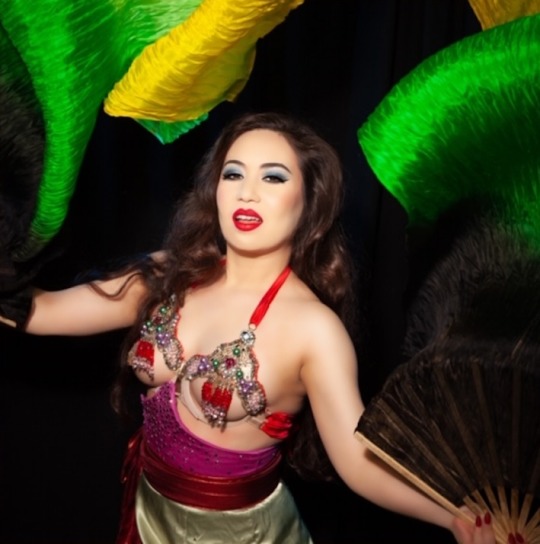
So how did you move into burlesque? After graduating from art school, I then did drama school in New York – the William Esper Studio – right in Manhattan. So in my second year of studying I ended up living in a circus studio in Brooklyn – The Muse – and that’s where I fell in to cabaret. It was a training space; a big warehouse for training and they also did shows. Because I was at drama school six or seven days a week I couldn’t really do circus. I really wanted to do aerial but I had no time. I would help out at the shows and directed my little projects there when I had time. Then I saw burlesque and thought, ‘Yeah, I could do that, I could strip’.
Who did you see that inspired you? Oh, some of my flatmates did it. They would do these little showcases so I saw burlesque there and then I started going to the dive bar shows and cabaret clubs, such as The Slipper Room, Nurse Bettie, House of Yes, Duane Park and the Bowery Poetry Club. And all the underground, like alternative New York performance-art shows. And then someone recommended me to go see Jo Boobs at the New York School of Burlesque. She’s a really famous teacher. She runs the school and is a very incredible lady. So I did her beginner course and that was it. We did a showcase and it was just so exhilarating.
You must have real body confidence, which not everyone has… Yeah, I guess also from the dance training my body wasn’t… I didn’t really think about it. I was used to getting changed with other girls and guys and being backstage, you know, in skimpy leotards. I mean if I had to speak onstage without a script I would be very scared… doing stand-up comedy terrifies me more than being naked. [Laughs]
I love your name Thank you. I really love Lulu, the play, and I was reading it and there’s one part where he calls her ‘You little devil incarnate’. And I thought, ‘Ah, Evelyn Carnate! OK!’.
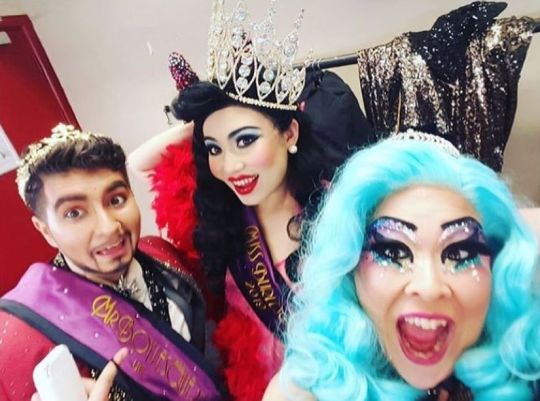
How does it feel that you’ve won the UK title? I feel very surprised but in a good way. [Laughs] I haven’t really done competitions. They’re very popular in burlesque; it’s a good way for newcomers to get in. I once did another one when I was first starting out, which I won. It was the Alternative Cabaret Battle. I went with an existing act, but for the UK competition I had to prepare a lot; a lot of work went into it. Many people helped me with costumes and polishing the act. I’m happy that an alternative performer won. I’m quite proud of that because I did think they would go for a more classic traditional performer.
So tell us about your style; you call it neo-burlesque… I’ve never worn a corset in any acts yet! So my style… I really love characters, I love stories, so all my acts have quite different characters and even when I’m doing classic I need a clear image and story behind it. I am, in quotes, The Shape Shifting Showgirl, so I do go from really classic slow striptease to quite strange performance-art burlesque. And sometimes people don’t actually recognise that I’m the same performer. I’ve had that a lot: “Oh, you’re the one that did that act? You look so different.” I really enjoy that.
Do you design your own costumes? Yes, because I did theatre design I really love sketching costumes. I sketch all of them but I’m not super-skilled at making so I go to professional people. For this one (pictured with green fans), a lot of people helped me… there’s this amazing lingerie designer called Rosie Von Boschan. It’s the second time I’ve worked with her; her work really inspires me, I guess because it’s not the classic burlesque look. It feels more true to my style and taste. She made the lingerie for my traditional act for the competition and Bourgeoisie made my dress. We had to submit two categories of acts, one traditional and one, they call it ‘unique’. I did my subversive pink fan dance that goes a little bit wild for that. [Laughs]
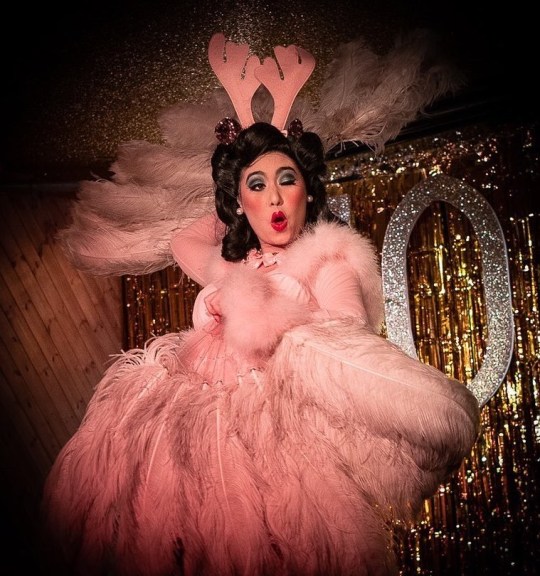
Why did you set up The Bitten Peach? I co-founded it with two amazing performers, Lilly Snatchdragon, who is a trustee of Cabaret vs Cancer (pictured right below), and ShayShay (centre below). Lilly is a drag queen and burlesque performer and ShayShay is a drag performer. We all had our ideas before of doing an Asian show. I wanted to do an all-Asian burlesque show. I read some things about The Forbidden City in San Francisco, where they would do all these revue shows with Asian performers. That was very inspiring and I just thought, ‘Where are all the Asian burlesque performers? Like, let’s gather them up’.
I planned a little show with Lilly, which never actually happened! Before that, Lilly was working on Polly Rae’s show at the Hippodrome in London, and she had these ideas of doing a big Asian extravaganza with like, lion dancers and traditional things, and was going to get me involved as a producer. ShayShay had already done an Asian show, Lunar New Queer. Lilly and ShayShay met up and decided to do The Bitten Peach together and then they brought me on board.
So, we’re the three founders but we’ve also launched a mentoring programme for new Asian cabaret performers; we call them Peach Fuzzes. We help develop their acts and they debut at a Bitten Peach show. We’re making the programme a bit more official this year. I teach burlesque as well at The Cheek of It! School of Burlesque and Cabaret. And I recently opened my own studio in Hackney Wick, where we will be launching The Bitten Peach workshops for Asian newcomers. The info will be on our website.

Does The Bitten Peach have a regular venue? We’ve been everywhere; at all the kind of iconic LGBTQ venues like The Royal Vauxhall Tavern, The Glory… we move all around and we’ve done a variety of styles, like club nights and theatre shows, more classic cabaret; we do everything. What can you tell us about Ashes to Ashes? All the acts are set to David Bowie’s music; original Bowie tracks, no covers, featuring Bowie from every era. It���s hosted by Benjamin Louche, another Cabaret vs Cancer trustee…
Rose Thorne adds: What a night we have in store! This is the fifth annual Ashes to Ashes show at BGWMC and is very much our cabaret family showing love for Bowie and recognising the influence he’s had on so many of us. Among many others, we have amazing burlesque from Demi Noire, circus from the internationally renowned Andromeda, and, of course, the sound of Bowie from Keith Ramsay, seen recently at Southwark Playhouse. We have a Bowie raffle, badges and our exclusive officially licensed Bowie merchandise. We encourage our audience to dress up and sing loudly! Best of all, every penny raised will support Cabaret vs Cancer.
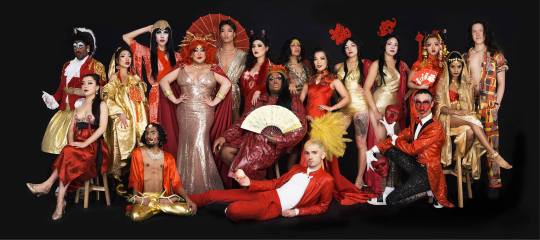
How is the burlesque scene doing in general? Evelyn: There’s a lot of crossover with burlesque and drag now, which really excites people. I mean drag is so popular now because of RuPaul’s Drag Race and also it’s a lot more diverse than it used to be, especially after The Cocoa Butter Club was founded by Sadie Sinner. She started a regular showcase for performers of colour and Lilly and I and ShayShay have done that. That existed a few years before Bitten Peach and that was definitely an inspiration and has completely changed the way cabaret is cast. It has become much more exciting and diverse.
Can you pick out a highlight from your career? Definitely the Underbelly show for Cabaret vs Cancer. It’s the biggest thing we ever did; there were 22 performers… there were group numbers… and we raised almost £4,000. Also because Lilly’s father passed away a few years ago from cancer and it was really important for her, it was so nice to do it for her as well.
Do you have any particular ambitions? Definitely more Bitten Peach. We’re really on a high right now. We didn’t even expect it to grow so fast, we just thought: “Oh, let’s just get together…” Sometimes I think people think we’re some big organisation but it’s just a few of us like, with our laptops in a coffee shop. But we’re making another full theatre show for March that ShayShay’s writing and directing, and we’d like to do more theatre and theatrical things that we could also possibly tour and get more audiences, especially Asian audiences in the UK and Europe.

Evelyn appears in Cabaret vs Cancer’s fundraising cabaret Ashes to Ashes at Bethnal Green Working Men’s Club in London on 26th February 2020.
Pictures: Corinne Cumming; Claire Seville; Juliet Shalam
For tickets to Ashes to Ashes click here
To donate to Cabaret vs Cancer click here
Evelyn on Facebook
The Bitten Peach’s website
Twitter: @Evelyn_Carnate @cabaretVScancer @bittenpeachuk
Follow @TheWidowStanton on Twitter
#evelyn carnate#bitten peach#cabaret vs cancer#ashes to ashes#david bowie#lilly snatchdragon#shayshay#burlesque#burlesque interview
2 notes
·
View notes
Text
Archive feature from 2008: Davenports Magic Shop
Everyone was saddened to read Davenports’ recent tweet announcing the closure of its magic shop in London’s Charing Cross Underground Arcade after 36 years. I was lucky enough to be sent there once to meet Bill and Roy Davenport, and, to mark its final day – 30 January 2020 – we thought we’d post the feature I wrote about the shop and the family who have run the business since 1898.
By Liz Arratoon

Whether you’re looking for cups and balls or a £1,600 substitution trunk, Davenports magic shop in London is an atmospherically lit, red-lined treasure trove of tricks, books, DVDs and ghastly things such as severed hands and fake blood. Started by mail order in 1898 by Lewis Davenport, it is the oldest family-run magic business in the world. Today it is managed by his great-grandsons, Bill and Roy, although their mother, Betty, who has been working in the shop for 60 years – since she was 14 – still goes in every day.
It is a flourishing concern, and Bill points out that their bestseller is one of the smaller items from a vast range of 1,600. “Generally speaking, it’s packs of playing cards. Most come in from America but there are dozens of different types of cards and card tricks. We go through an awful lot of them.”
But how did it all begin? An early poster describes Lewis as a ‘bewilderist’. Roy explains: “He was a self-taught manipulator. He’d make cards, billiard balls, thimbles or coins appear from thin air. He’d started off as a juggler but bought a magic book and got into magic. His father had died when he was eight. So by day he was an apprentice barrel-maker but did shows in the evening to support his family, and met other magicians who needed tricks.” Lewis made improvements or added a novel twist to standard tricks, started selling them to his friends and began to build up his business. He was a star of his time and his name helped the shop to do well.

Working in Germany during the thirties, he recognised that war was imminent and had a brainwave. Roy continues: “He was massively ambitious and stole a lead on all the other magic dealers. Germany was the China of the day, mass-producing stock. He was wholesaling all round the country and bought up items literally by the million, and filled the store. He supplied other dealers throughout the war. That has stood us in good stead ever since.”
But the fact that the business survived owes a great deal to Betty. In 1962, Lewis and his son, George, died within 12 months of each other, leaving everything to her. Roy says: “Magic has always been a male-dominated bastion, and a lot of people assumed she’d sell, but she kept it going. She carried the London shop alone until 1979. It was an extraordinary effort.”

In 1984, Davenports moved to its present subterranean hideaway in the arcade at Charing Cross Underground. As Roy explains: “From 1961 we were opposite the British Museum. You’d have coachloads of children deposited at the museum, who all ran over and spent their 50p on stink bombs. It sounds great but the magician at the back who wanted to spend £100 couldn’t get to the counter or discuss things openly. The advantage now is that we’re dead centre in London but we’re out of the way. Magicians find us and they’ve got complete privacy.”
One of Davenports’ new ventures, its magic school, began because they found a lot of people were unsure where to start, and it attracts a cross-section of students. Bill says: “It’s really successful. We’re trying to explain the basics of card magic and non-card magic, manipulation, and give them some idea of how to progress. We’re making it as interactive as possible so people can learn a move or routine in the class and get instant feedback about how it looks. People want to learn techniques but we do try to encourage stagecraft, misdirection and some idea of the audience.”
For those who cannot get to London, Bill has a couple of suggestions: “Normally, we tend to recommend things based on the person’s experience, their individual needs and budget. For youngsters, a Svengali deck is very good. Often trick decks can only do one thing but this one’s great because it has a huge variety. It’s not too expensive and you can get up and running with it.” He adds: “The Miracle Ring is another trick I love. You have a little metal ring and you throw the ring at the shoelace and they link together. Anyone can do it.”

He recommends Spellbinding Boxes for more experienced practitioners. “You have a coin that can be signed and put under a handkerchief. It disappears, and then you have a small brass box. The spectator opens the box, inside there’s another smaller box, so you go through about five and in the innermost box is the person’s signed coin. It’s good for beginners to intermediates but can also be done in a professional environment.“
And Bill mentions Rainbow Cascade, a card trick that Davenports has sole rights to, which “takes a bit more practice”. He explains its intriguing effect: “You show some cards, which change from being face up to face down, face down to face up as you count them from hand to hand, and for the kicker at the end you turn them over and they’ve got these glittery prismatic backs, completely different to anything you’ve seen before.“
As for the future of Davenports, Bill’s 12-year-old son, Alex, is already inventing his own tricks. “We don’t pressurise him but he’s come up with some very clever things.”
His great-great-grandfather would be proud.

Davenports is looking for a new central London venue for its shop, but until then it has more than 1,400 items available to buy online here.
Pictures of Betty and Bill Davenport taken in 2008 by Stephanie Methven
Twitter: @davenportsmagic
Follow @TheWidowStanton on Twitter
© Liz Arratoon
This feature first appeared in The Stage
0 notes
Text
The story behind the photograph: Marlene Dietrich by Andrew Davidhazy
When I interviewed Marlene Dietrich impersonator Peter Groom, I used this vintage photo and, because I couldn’t find a credit for it, I didn’t put one. A long time later the man who took it contacted me to point out my oversight. His name is Andrew Davidhazy.

I thought, ‘The picture looks as if it were taken later in Dietrich’s career, perhaps in the 1960s, a photographer would have been perhaps mid-twenties or early thirties, this man must be ancient!’ But it turned out Andy had taken the shot when he was… a schoolboy! ‘What!’ you cry. ‘How was that even possible?’
Let’s ask him.
The Widow Stanton: I’d love to know how you came to take this photo of a major Hollywood star when you were still a schoolboy? Andrew Davidhazy: I was a senior at Boston Latin School and was the co-editor of the school’s magazine, The Register. It was the winter of 1961 and Gunars Viksnins, a reporter friend of mine, and I, feeling that our school's students and staff needed to get a more complete view of life, decided to bring some ‘culture’ to them, by publishing written and visual articles. We decided to interview prominent artists performing at one of Boston's more important theatres.
It so happened that Marlene Dietrich came to appear at the Colonial Theatre with her troupe of Spanish dancers. We thought this would be perfect! After the performance – which we did not attend because we could not afford it – we went to the backstage entrance, a pretty dingy place. We asked the guard if he would make our presence known to Ms Dietrich and relay a message from this duo from Boston Latin School asking to spend a few minutes with her for an interview. He disappeared into the theatre and returned shortly thereafter with bad news; she said she was too busy to see us.
Oh no! So how did you get to see her? We were, of course, crestfallen but not totally discouraged. It was like we almost expected to be turned down. Then we decided we could not let this opportunity pass and to gamble on a positive outcome. We pooled our money and went across the street to a flower shop and spent $30 on a dozen long-stem roses. We asked him to return to Ms Dietrich with the flowers and reiterate our request. He came back a few moments later and said: “Ms Dietrich will see you.”
How did you feel? Success! Great! She was still on stage and wrapping up things there when I met her. I took one photograph of her; no back up, no second shot. What was I thinking? Anyway, that is the photograph that you see above.

Was that the end of the visit? She and Gunars then went to her dressing room and spent a good 45 minutes chatting. In the meantime I went to photograph members of the troupe of dancers in their dressing room. Once the interview was over we spent a few more minutes with the dancers and other members of the cast and finally went to leave by the backstage door through which we had arrived.
As we got there I noticed Ms Dietrich on the phone sitting on a rickety box and apparently talking to her daughter. She looked so out of place and character yet totally in command of the space she occupied. I did not want to make a fuss about photographing her then but made two quick exposures with my back-up 35mm camera; the one I’m using in the photo above.
Did you publish both? Once the article was prepared and we were ready to assemble the magazine I decided that the black and white environmental photograph was a more interesting representation of the actress and performer than the colour one. This was OK but nowhere as interesting as the B&W photo in my opinion.
Anyway, being the co-editor, my decision stuck and what you see is the result of the collaboration between Ms Dietrich, Gunars and myself. Perseverance, ingenuity and creativity all combined to make the interview and photographs possible, with fond memories to boot.
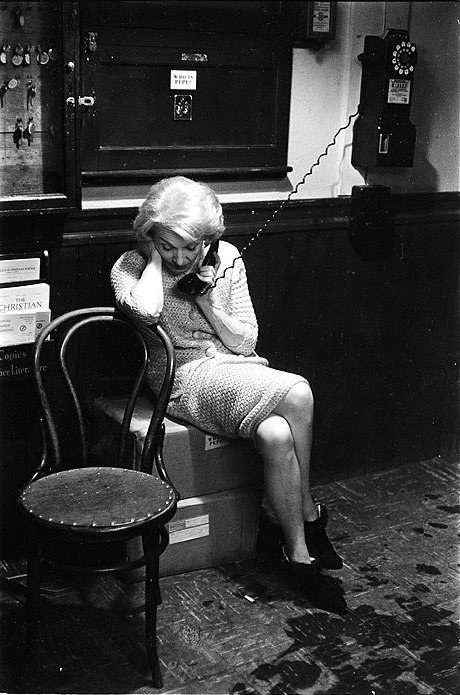
Did you feel hard done by that Gunars spent so much extra time with her? No, I don’t think so… I was busy photographing her troupe while he was doing the interview. Sadly, I can’t find any of those photographs though…
Were people amazed when they read about your encounter? I don’t remember if they were amazed but I seem to recall that the magazine received an award of excellence that year… probably partly to do with the interviews we did. For our more technically-minded readers, here is some information about the cameras and film Andy used. Andy made the colour shot using a medium format Mamiyaflex camera and Kodak color negative film, with a Braun handle-mount electronic flash. His back-up camera was a Leica IIIg with Summitar f/2 lens and he used Kodak Tri-X film.

All pictures by Andrew Davidhazy and used with his kind permission
Follow @TheWidowStanton on Twitter
0 notes
Text
Lauren Jamieson, aerialist and acrobat – Tarot: the Vault Festival
Scottish aerialist and acrobat Lauren Jamieson – who was born in Kilmarnock – holds a PhD in chemistry from Edinburgh University, but last year gave up her science career to pursue circus full time. She started as a gymnast when she was four, but later fell in love with trampolining while studying at St Andrew’s University. Lauren competed nationally and internationally, winning titles and awards. In 2009 she discovered circus while working at the French Woods Festival of the Performing Arts summer camp in New York.

Lauren worked for Spinal Chord for nine years, teaching and performing, and also with Paper Doll Militia on its aerial theatre piece, Warped. She performed in The Feathers of Daedalus Circus show Tarot, which ran at the 2019 Edinburgh Festival Fringe, and also at the Vault, and the Underbelly Festival in London. She teaches regularly for Aerial Edge and performs and delivers workshops throughout the UK. Lauren is now based in Glasgow, from where she chats to Liz Arratoon, before reprising her role in Tarot. It returns to the Vaults from 28 January – 1 February 2020 during the Vault Festival.
The Widow Stanton: What was your science job? Lauren Jamieson: After I did my PhD I worked as a postdoc in the University of Strathclyde for three years before I went full-time circus. I did raman spectroscopy, which is a vibrational spectroscopy. I looked at cancer research, basically, so it was analytical chemistry to try to help us understand more to do with that.
How hard was it to leave it? It was a hard decision to make because it’s kind of scary. I had been performing and teaching circus already but I was basically doing two jobs. [Laughs] So I’d do my science job during the day and teach or train at night, which became a lot to keep on top of. I’d kind of said for years, ‘Oh, I just wanna do the circus thing’, and I finally did it. But it was kind of scary because of money and all the other considerations that you have to take into account when you do that.
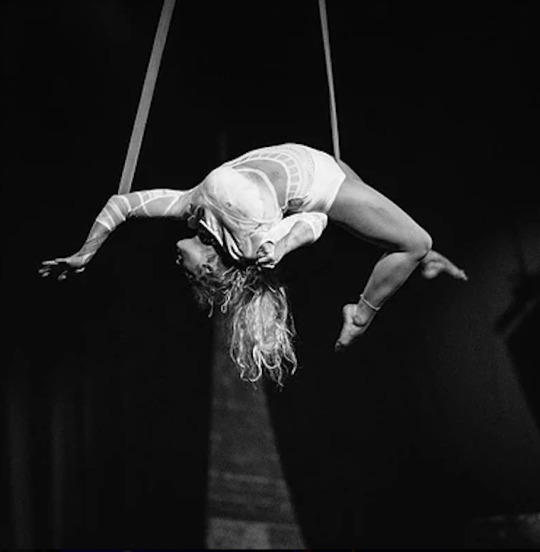
Let’s go back to the beginning; why did you start gymnastics? I didn’t really choose when I was little. It was just, like, “Here’s some activities for you to do.” I did acrobatic gymnastics, which is the partner stuff, so balancing on top of each other… acrobalance. My parents just sent me, and I wasn’t that good until I was probably about 12 or 13, and then I was more interested in it. I was competing as a base; mostly a base in a trio. We medalled at Scottish sportsacro championships, then I went into trampolining when I was 17 and won a lot of medals. I went to university; there wasn’t a gymnastics club but there was a trampolining club and I got really into that, and medalled at British competitions and won Scottish titles, as well as competing in Portugal.
So when you went to New York, was it just for a summer? Yes, it was after my first year at university, because we had long summer breaks, so I did… have you heard of Camp America-type things? Basically you go and work in a summer camp. I got a job teaching circus at the French Woods Festival of the Performing Arts. I hadn’t ever done it before but they kind of just went: “You’ve done a lot of gymnastics…” I kind of learnt the circus stuff as I went along. It was probably one of the best things I’ve done in my life. It was a great experience and I learnt a lot. They do a lot of theatre and dance, but they’ve got a really big circus department as well. It was apparently the biggest children’s circus in the world. We had all these facilities… we had all these kids coming through, and we made a show every three weeks with them.
Were you hooked on circus after that? Pretty much, yeah. I was still trampolining at the time, so that was most of my training. But I came back to Scotland, and found somewhere to train in circus. And I haven’t really stopped since.
Are your circus skills self-taught? Partly. I didn’t go to a circus school specifically. I worked for a company called Spinal Chord in Glasgow for a while and learnt a bit from there, trained a lot on my own over the last ten years and have been to workshops with various people around the UK and Europe to pick up stuff.

Obviously the skills you already had would translate naturally but how did you take to working at heights? I’ve never been that bothered with the heights, and the way you learn aerial in circus feels quite safe because you start lower and then get used to being comfortable up higher.
I always have an urge if I’m somewhere up high to fling myself down! Yeah, I totally get that but I’d say I feel that with everyday things rather than I do in the circus. In circus if I’m on something high you have the urge to stay there. I don’t know, it’s weird, you don’t feel it as much in that context as you do… being on a bridge.
Was there always something inside you that wanted to perform rather than compete? I probably made the transition gradually. I did really like competing to a certain extent. With trampoline especially I liked having the goal of competing. I got very nervous… it was quite easy to mess it up, so it was like, ‘You’ve got his one chance. It takes 20 seconds and it’s really easy to make a mistake that would mess it up completely’. But with circus I enjoy more the fact that you can pretty much make mistakes and no one would know. It’s a lot freer and a lot more about performing and engaging the audience, which is a nice environment to be in.
And there are costumes! Costumes are good but they’re also interesting because you end up with lots of practical considerations when you’re performing in circus. But I do like the dressing-up and putting on a show. It is fun!
Are you mainly an aerialist now? I’m a bit of everything. I do a lot of different aerial disciplines, I do a lot of partner acrobatics as well. So, Joanna Vymeris, the director of Tarot, is also a performer. We met early last year and do a lot of acrobatics together as a duo.

Is it very uncomfortable to perform on chains? Yeah, but not much of the aerial stuff is comfortable. People always have that reaction to chains and they’re not the most comfortable. When I started performing on them I had a lot of bruises; you get used to it. [Laughs]
How long have you been working with The Feathers of Daedalus Circus? Just since last year. Joanna ended up in Glasgow for a bit and we started kind of training together, and then she had this show, Tarot, she was making, so she invited me to be part of it.
Does Glasgow have a quite strong circus scene? We have. I work at Aerial Edge now. We have really great facilities. We have pretty much anything you’d want. It’s a nice space to train, but I’d say Scotland in general the circus scene isn’t massive, but it is getting bigger.
Would you describe The Feather of Daedalus as a circus theatre company? I guess so. Joanna likes the storytelling aspect, and the tarot pack is quite a visual thing.
Tell us about the show. Is it improvised? It’s not improvised. We’ve got a structure with set elements where people do their own acts. And then there’s tarot readings involved in the show. We’ll do two audience tarot readings; we’ll bring up an audience member. There are a lot of tarot cards, 78, in a full deck, with major and minor arcanas. We used the 22 cards of the major arcana before. We prepared something for those cards but we don’t know what’s going to come up on the night.
We drew three cards for each of the audience members and what they are is undetermined. It’s totally random and it’s quite an interesting one to perform because they’ll be some nights where you end up doing lots of things and others when you get an easy night. [Laughs] During the Fringe there tended to be one of us who was like, knackered after a show because all of the cards would relate to their acts. Then another night it would be someone else. This time we’re using the full pack.

Who else is in the show? We’ve got acrobats Josh Frazer and Tessa Blackman, and hand-balancer Imogen Huzel, so it’s the four of us this time. And we’ve got Yoshi, a four-man live band. They’ve made all the music and are really great. All the cards also have music associated with them so they play different music for each card that comes up.
So who does the readings? Tessa has done them in the show so far – she’s a psychic reader as well as a circus performer – but this time Ruby Wednesday, the new compere, is doing them.
Which skills are you performing? We have some choreographed group acrobatic acts in the opening and the finale. I was doing a rope act – rope is one my main disciplines – and the chains would sometimes come up depending on the cards. If The Devil comes up, I perform on chains, or I’ll do rope if The Hanged Man comes up, as well as the other rope act, which isn’t linked to the cards.
I imagine the Vaults lends itself nicely to this show’s subject matter… Yeah, it’s pretty perfect as a set for this kind of show. It’ll be really nice to be back because it’s the first place we did it.

What has been your circus highlight to date? Doing Tarot at the Edinburgh Fringe was one of them. Being Scottish it was nice to actually perform at the Fringe because I’d never performed there before. It’s a really fun, exciting show to be part of and as 2019 was my first year doing circus full time, it’s worked out well with things like that going on.
What advice would you give to someone else thinking of changing career? A lot of people hold back because they’re scared. I’d say, ‘Don’t be stupid, like, if you’ve got nothing else set up. It’s OK to just go for it because it’ll basically just work itself out’. And, ‘Follow your heart’, probably.
How did people react when you said, ‘I’m stopping now?’. Because of how much circus I’d done and how much I’d probably talked about it, they weren’t surprised. Most people were happy that I was doing what I wanted to do. Actually my parents even were OK with it. It’s the kind of thing you’d think they would be like, ‘Oh, my goodness!’. I still have a degree, which is good. My mum’s main thing especially was asking me: “Are ye making enough money? Are ye making enough money?”
Have you got any particular ambitions or are you just seeing what comes? I’ve got a few different things; being part of shows like Tarot is great. Me and Joanna have actually started another company – Sonder Circus – with one of our friends, actress Ashley Smith. We made a show called Cailleach, which is a Scottish word. We made it very quickly and got a good response. And we’re looking to get funding. I’ve written the grant application, so we can work more on the show and take it further, possibly to the Fringe next year. So that’s quite an exciting adventure.
vimeo
Lauren appears in Tarot, which runs at the Vaults in London from 28 January – 1 February 2020 during the Vault Festival.
For Tarot tickets, click here
Picture credit: Caryn Hughes; Federico Rojas, Sofi Lee-Henson; Nick Hampson
Lauren on Instagram
Twitter: @feathers_circus
Follow @TheWidowStanton on Twitter
#lauren jamieson#tarot#feathers of daedalus#Vault Festival#circus interview#aerialist#acrobat#imogen huzel#Josh and Tess#ruby wednesday#joanna vymeris
0 notes
Text
The Widow’s Best of 2019
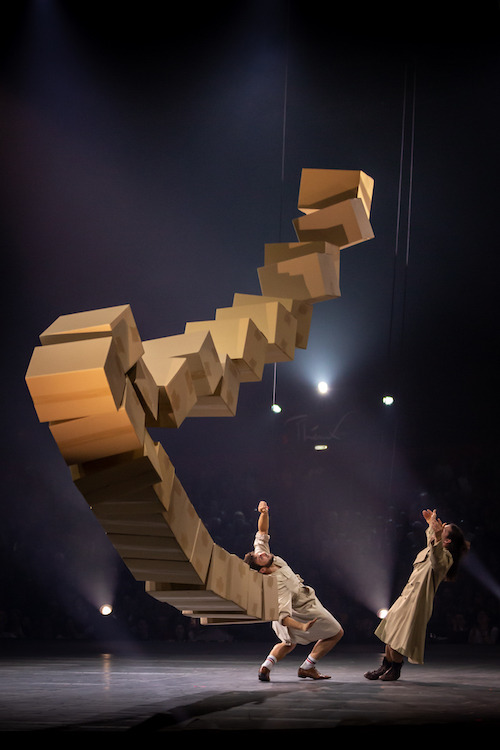
Welcome readers to our Best of 2019 round-up. Some of you might remember that when one half of The Widow, Liz Arratoon, started writing about the circus 25 years ago – with Widow other half Adrian Arratoon by her side – she was almost a lone advocate for the art form. Don’t you get jaded, people ask us. Absolutely not! But we do long for something a bit different, and this year we have been disappointed that so many circus shows and acts have started to look a bit similar and yawny.
One notable exception gets our Best Show, and we did love Company Soralino’s clowning with cardboard boxes, and Mizuki Shinagawa on silks at the 40th Cirque de Demain festival, but we have cast our gaze beyond circus to take in whatever else has taken our fancy. Just to remind people, and before any more sensitive hearts are broken, anything we have seen this year, no matter when it was created, is eligible for selection, but if we haven’t seen it, it isn’t. Our list, our rules, and, in no particular order, here it is. All shows are in London unless otherwise stated.
BEST SHOW: We really enjoyed Aurelia Thierrée’s Bells and Spells at the Norfolk & Norwich Festival, but our Best Show is La Nuit du Cerf (A Deer in the Headlights) by Cirque Le Roux, seen on French TV. This is the company’s follow-up to The Elephant in the Room, and new cast members Valerie Benoit and Mason Ames join the original troupe of Lolita Costet, Yannick Thomas, Philip Rosenberg and Gregory Arsenal. Together they showcase a sophisticated and exquisitely choreographed blend of top-flight acrobatics, handstands, hand-to-hand, roller-skating, tight wire, you name it, in a totally fresh and exciting presentation, all backed by a wonderfully eclectic soundtrack. If only more companies could come up with something so innovative.
youtube
FEMALE ARTIST OF THE YEAR: Extraordinary acrobat Esmeralda Nikolajeff, part of the line-up for Barely Methodical Troupe’s third show, SHIFT, which opened the London International Mime Festival at the Platform Theatre.

MALE ARTIST OF THE YEAR: Wes Peden, juggler, who had a scintillating guest spot in Gandini Juggling and Alexander Whitley’s show Spring at Sadler’s Wells. Don’t miss his solo show Zebra at the Southbank Centre’s Purcell Room during the London International Mime Festival in January 2020.

BEST GIG: Le SuperHomard in the library at the Institut Français as part of the Music Rendezvous season, and Durand Jones and the Indications, seen at the Southbank Centre’s Queen Elizabeth Hall during Meltdown.
MOST ENTERTAINING: Lucy Worsley’s talk about Queen Victoria at Southwark Cathedral.

BEST VENUE: The Poodle Club in Sydenham.
BEST ACT: Foot-jugglers Marina and Svetlana Tsodikova, who are the Crystal Ladies in Cirque du Soleil’s Totem. They also get MOST GLAMOROUS.

BEST COSTUMES: Alejandro Gómez Palomo for The Male Dancer, choreographed by Iván Pérez, seen on the Arte app; Jean Paul Gaultier’s Fashion Freak Show (pictured below) seen at the Folies Bergère in Paris, and Queen Victoria’s crown, designed by Sheila Hay for A Night with Thick and Tight at the Lilian Baylis Studio, during the London International Mime Festival.
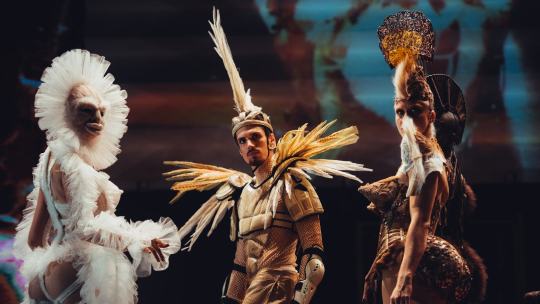
BEST INTERVIEW: Alec Baldwin’s chat with Elaine Stritch on his podcast Here’s the Thing.
BEST MAGIC TRICK: Shin Lim, winner of America’s Got Talent: The Champions 2019, doing card tricks.
LOUDEST GASP!: This photo of Joan Crawford, seen on @cjubarrington’s glorious Twitter account, where he posts vintage photos of Hollywood stars.

BEST MOVE: Anything by world champion football freestyler Liv Cooke.
BEST CASTAWAY: Living legend John Cooper Clarke on Desert Island Discs on BBC Radio 4.
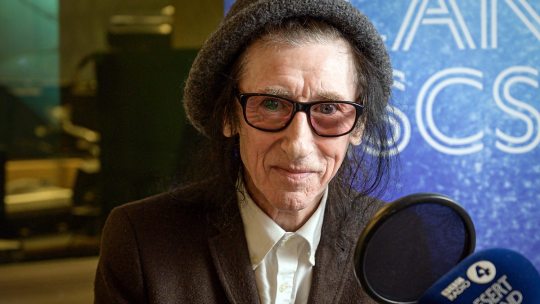
BEST GOWN: Kathleen Nellis’ fabulous recreation of Marlene Dietrich’s ‘naked’ dress for Peter Groom’s show Natural Duty, originally designed by Jean Louis. Peter also wore it in Dietrich: Live in London, seen at the Crazy Coqs, Live at Zédel, for which he gets BEST CABARET.

MOMENT OF WONDER: Andy Goldsworthy throwing handfuls of snow into the wind in the documentary Rivers and Tides.
BEST LOOK AT THE MET GALA: Harry Styles wearing a sheer Gucci blouse!
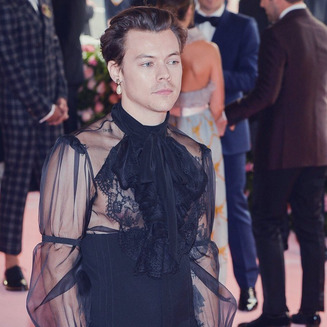
HOTTEST TICKET: Phoebe Waller-Bridge’s solo triumph, Fleabag, at Wyndham’s Theatre, and, yes, we did speak to Andrew Scott this year!
FUNNIEST PERSON: David Mills, who stormed New York with Bitter Endings, but we saw him at the Poodle Club. Someone! Book this show for London!
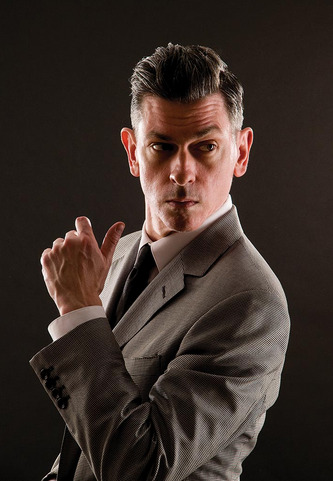
BEST DANCE: The Seasons’ Canon choreographed by Crystal Pite at the Opera Garnier, seen on the Arte app.
BEST SET: Anna Reid’s simple, stylish and effective design for The Sweet Science of Bruising at Wilton’s Music Hall.

BEST SHOWBIZ STORY: The Man Behind the Microphone, first heard on Outlook on BBC World Service. The story of how filmmaker Claire Belhassine discovered that her unassuming Tunisian grandfather, Hedi Jouini, had been a singing megastar. Then we found the film of the same name.

BEST DOCUMENTARY: Liz Garbus’ 2016 Leave Nothing Unsaid, in which Anderson Cooper interviews his remarkable mother, Gloria Vanderbilt, about her life. Devastating and moving.
MOST FLAMBOYANT: Zack MacLeod Pinsent, who dresses like this all the time!

BEST SHOWBIZ BOOK – MALE ARTIST: Me by Elton John with Alexis Petrides.
BEST SHOWBIZ BOOK – FEMALE ARTIST: Dreamgirl: My Life As a Supreme by Mary Wilson… of the Supremes, with Patricia Romanowski and Ahrgus Juilliard.
BEST AUDIENCE: Ah, woof!

MOST NOTABLE ANNIVERSARIES: Ten years of The Double R Club, which was founded by Benjamin Louche and Rose Thorne, and runs at Bethnal Green’s Working Men’s Club, and three years of Cabaret vs Cancer, the registered charity started by Rose.
BEST VINTAGE CIRCUS PICTURE: Coo!

BEST FILM: Spike Lee’s BlacKkKlansman – which should have won the Oscar – and Olivia Wilde’s delightful teen comedy Booksmart.
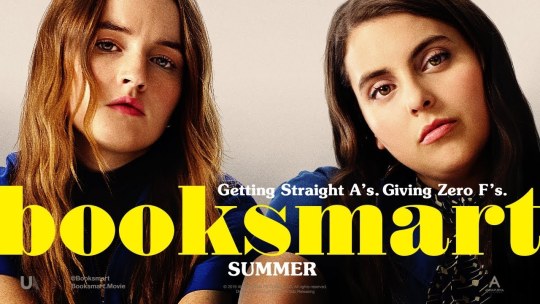
BEST FILM SCORE: Out of Blue by Clint Mansell.
MOST IMPRESSIVE MEMORY FEAT: An hour and 40 minutes’ worth of words spoken by the one and only Maggie Smith, who returned to the stage in A German Life at the Bridge Theatre.
MOST ALLURING: Dina Martina, seen at Soho Theate Downstairs in Forgotten but Not Gone.

MOST MISSED: Agnès Varda, Clive James (born Vivian Leopold James!), and the French TV variety show Le Plus Grand Cabaret du Monde, hosted by Patrick Sébastien, which started in 1998 and ended this year.
GONE FAR TOO SOON: The creative genius Nell Gifford, co-founder of Giffords Circus, who died at 46.
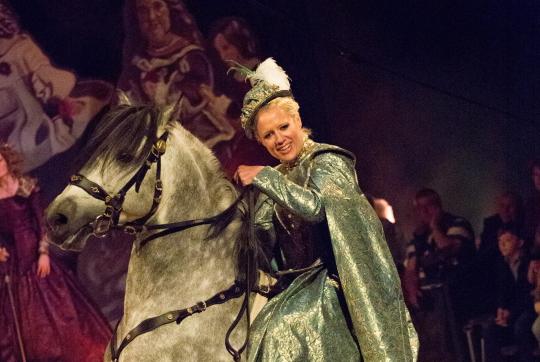
MOST ANTICIPATED: Obviously Wes Peden’s previously mentioned Zebra, and Daniele Finzi Pasca’s latest creation, NUDA, premiering on 11 September 2020 at LAC, Lake Lugano in Switzerland.
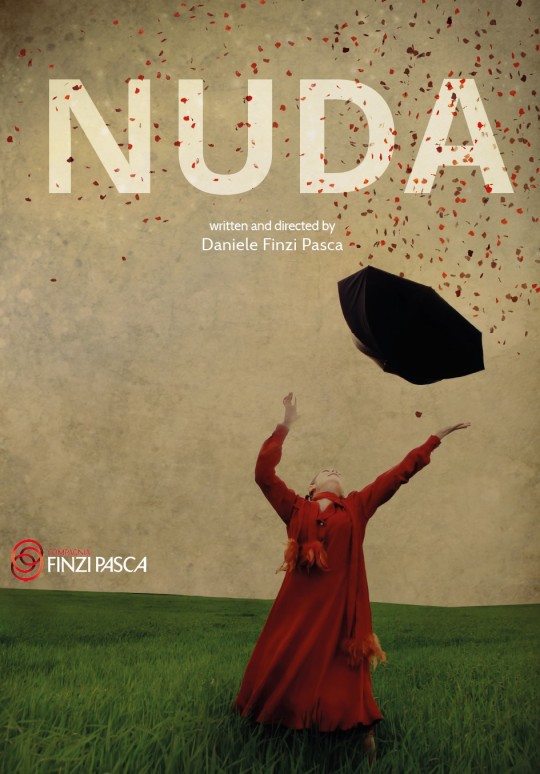
Look out for our first interview of 2020, with Scottish aerialist and acobat Lauren Jamieson, who has a PhD in chemistry but gave up her science career to focus on circus full time. She will appear in The Feathers of Daedalus show Tarot during the Vault Festival 2020.
Picture credits: Company Soralino, Valérie Thénard Béal; Wes Peden, Pierre Feniello; Peter Groom, V’s Anchor Studio. Any we’ve missed, please let us know.
Follow @TheWidowStanton on Twitter
© thewidowstanton.com
#best of 2019#cirque le roux#Wes Peden#barely methodical troupe#john cooper clarke#shin lim#lucy worsley#nell gifford#david mills#harry styles#liv cooke#compagnia finzi pasca#Esmeralda Nikolajeff#anderson cooper#maggie smith#Dina Martina
4 notes
·
View notes
Text
Cylios Pytlak, speed juggler, Cirque du Soleil’s show LUZIA
Self-taught speed juggler Cylios Pytlak – who comes from Valenciennes in northern France – started practising when he was ten, using balls, clubs and hats. He gradually developed his skills through repetition, while also devising new juggling patterns. During his teenage years he performed in small cabarets, shows and festivals, at 15 winning the grand prize at the French festival Talents de Scene. At 17, he spent a season with Cirque Georget and has been performing ever since. His highlights include contracts with Cirque Alexandre Bouglione and Cirque Firmin Bouglione in Belgium, Zirkus des Horrors in Germany, and the Cuban circus festival Circuba.
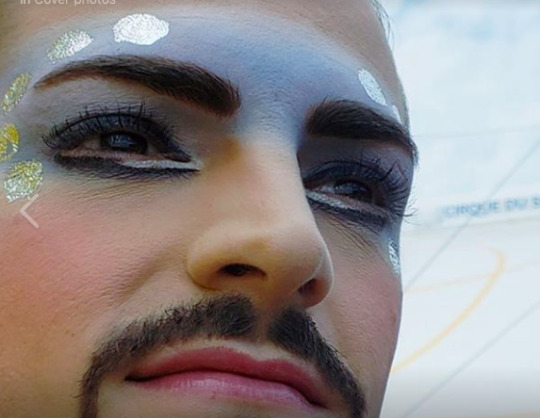
But his dream was always to perform with Cirque du Soleil, and after auditioning in 2009, it took until 2017 for him to achieve it. Cylios has appeared in its Mexico-themed show LUZIA – which is directed by Daniele Finzi Pasca – since it opened. Having toured the United States, Mexico and Canada for two years, he now comes to London’s Royal Albert Hall, where the show runs from 12 January – 1 March 2020. He chats to Liz Arratoon via email.
The Widow Stanton: Cylios is an unusual name. Where is it from? Cylios Pytlak: My real name is Cyril. Cylios is my stage name. I chose it with my family when I went on stage for the first time when I was about 12 or 13 years old. My goal was to be the only juggler with this name. It was also easier to remember for the fans and the people from the industry.
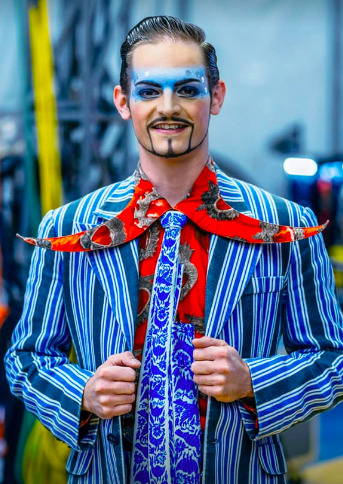
Are you from a circus background? No, my father was a police officer – he is now retired – and my mum is a nurse. I had always been a circus fan. My grandparents often took me to a variety of shows by Cirque Arlette Gruss when I was little. As soon as a circus was in my town, I was taking my bike to go past it all the time. This is where I learned to set up a big top. I was also taking care of the animals, since it was mostly traditional circus. My family always supported me and helped me to reach my goals. I feel really lucky to have them.
Why did you choose to be a juggler? When I was ten years old I really wanted to learn a circus discipline. However, there was no circus school near my home. So I tried to learn by myself what was most accessible to me: juggling. When my parents offered me my first three juggling balls I was able to do some catches right away. I fell in love with it and shortly became an addict. [Laughs]
Are there any other jugglers in your family? No, I am the only one.

Why did you decide to do speed juggling? Not so long after I first started juggling by myself I saw Mario Berousek, the really famous speed juggler, on TV; on Le Plus Grand Cabaret du Monde.
Oh yes, we saw him in Monte Carlo a couple of times. He is actually the pioneer of speed juggling. I was completely fascinated by him and told myself I wanted to be like him. As of that moment, he became my inspiration. What is so crazy is that I had a chance to juggle with him a couple years later. I gave the idea to the juggling equipment company Mister Babache – Jonglerie Diffusion to create a modern replica of his artisanal club. At that time, no club for speed jugglers were marketed. Incredibly, this is the club I use to perform in LUZIA. This club can now be bought anywhere around the world.
What is the most important advice you could give to someone wanting to learn it? It is important to learn to listen to your body and to your mind. You can’t impose an evolution rhythm on yourself. You need to learn to enjoy the good days where you progress well and you learn things. You also need to be able to adapt your training when it’s not going really well. It is a process of hit and miss and it is totally normal.
Are the clubs the same as for regular juggling? As for the length and the weight it is really similar. Overall, a speed juggling club is slimmer and the rotating point is more central. This allows you to have tighter juggling and allows you to accentuate the propeller effect and the rotation effect ‘on the spot’, which characterises speed juggling with clubs. It is however possible to do speed juggling with a classic club. I did it for many years.

Are there any famous jugglers present or past you admire? There are a lot. I can’t mention all of them. Of course, there is Mario Berousek (pictured above), and the legend, Anthony Gatto. Even though he is not a juggler anymore, he is part of juggling history. Tony Frebourg is also a legend with the diabolos. Even though I don’t do diabolos he was a big example for me. He has such an amazing career. He motivated and guided me a lot when I first started. I always admired his work. He became a friend over time. I met him in 2006, the same year I met Mario. It’s when I saw him succeed with another Cirque du Soleil show, OVO, that I told myself that I could also do it.
Do you remember your first appearance juggling in a show or cabaret? Totally. It was in a Christmas gala in Quievrechain, a small town in northern France, in December 2004 when I was 13. Before that I did little shows in private events, but nothing big. I really see this gala as my first show since it was the first time I was on a real stage. I was in front of a crowd of several hundred people. There was stage lighting and a real curtain opening. A lot of things happened that night that gave me the motivation to continue to train to get better and to go back on stage as soon as possible: the adrenaline before the performance, the atmosphere around the show, the joy to perform in front an audience, the joy of sharing with the public and the feeling when you receive the crowd’s applause. The following morning, I was already working on my act to see how I could improve it. I was doing video sessions of my performance to see what elements on the technical and artistic side I could improve. Since my first ‘little shows’ and especially after this gala, being on stage was what I wanted to do for a living. I never imagined my life without it. I really wanted this to be my life on a daily basis. I put in all the hard work I needed to by myself. Therefore, I never went to a professional circus school. I started my professional juggling career at 17 after completing a sales degree… just in case!
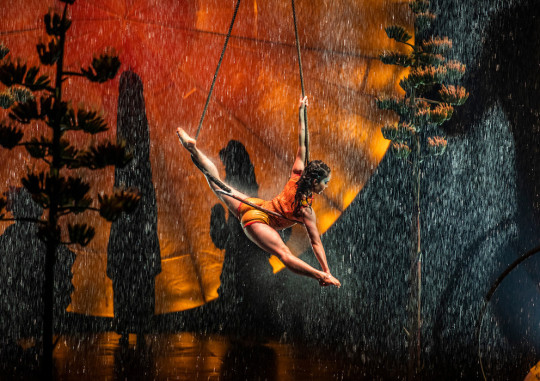
You had a long wait to get into Cirque du Soleil. Did you ever give up hope? I did a casting with Cirque du Soleil in Paris in 2010. I was 19 and I had been dreaming about Cirque du Soleil for a while. To be part of this company was my biggest dream. I never gave up on my dream, but it’s when I started to think less about it that they first contacted me for LUZIA.

Tell us about the show… LUZIA is a wonderful show. It allows you to discover the Mexican culture in a unique way. And you don’t need to be Mexican or to like Mexico to fall in love with this show. You will go through a diverse range of emotions. It’s a magnificent and breathtaking show.
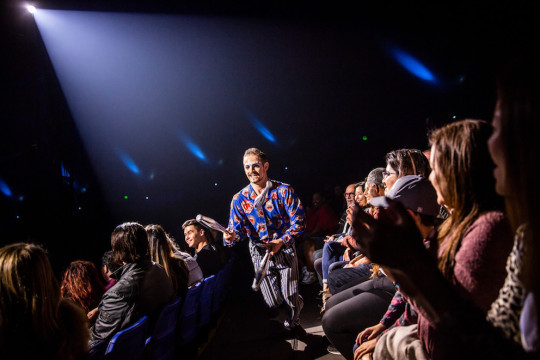
I see you have to run through the audience while juggling. Do you enjoy that close interaction? Yes, I love it! It is important for me to establish this contact with the audience. This was part of my routine before I joined LUZIA. I had the chance that the artistic director of the show, Gracie Valdez, gave me the freedom to continue to do it.
What do you like or dislike about touring? To be touring around the world is a great opportunity. A lot of people need to make sacrifices to be able to travel. For us it is the way we live. What I enjoy the most is to discover the landscapes and the lifestyles of people in all the places we visit. But the most difficult part is to be away from my friends and family in France.
Where have you liked the most? I liked a lot of different places, but I think my favourite was California. Especially Los Angeles, which was my first city on tour. It was unforgettable. I also really liked Orlando with all the attraction parks, shows and entertainment… without forgetting the nice weather and the palm trees!
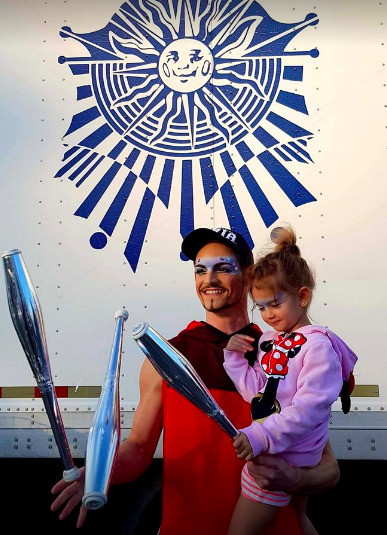
Do you travel with your family? Yes, I’m married to Madeley. We were touring together in a traditional circus in France, La Piste aux Etoiles, when we met. She was part of Russian swing, Chinese pole and acrobatic jump rope acts then. She went to the National Circus School of Cuba where she trained as a foot juggler. After our wedding in 2012, she was performing foot juggling and aerial hoop as a soloist. We were performing our acts in the same shows before I joined LUZIA but she does not perform in the show. We now have a little girl who’s three years old named Cameron. My wife and daughter travel with me at all time. Cirque helps us a lot with that. It is great!
Cameron loves circus. She already knows LUZIA by heart. She loves to imitate me or Madeley. I think it is normal for her age, because it’s what she is surrounded by every day, which I think is a great experience for her. Madeley and I don’t want to influence her in any way. We want her to do want she loves when she grows up. We both were lucky to have parents who supported us in our passion, and we want the same for our daughter.
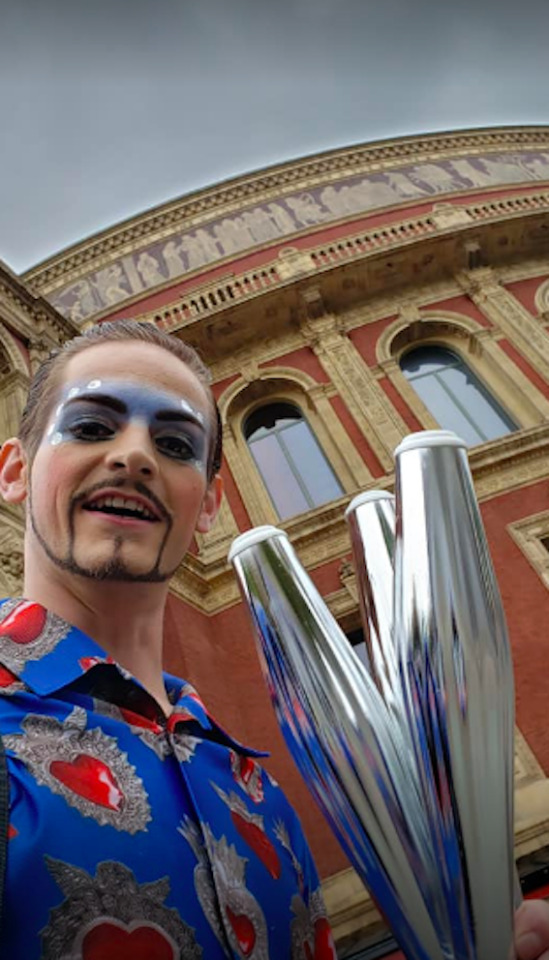
How do you feel about coming to the Royal Albert Hall? I’m really excited to perform in this iconic venue. It will be a really important moment of LUZIA’s tour. I had the chance to visit the Royal Albert Hall when I was in London a few weeks ago for a PR trip. It is magnificent! I have goosebumps just thinking about it.
Has being in Cirque du Soleil lived up to your expectations? Totally! I worked as a professional juggler for about ten years before joining the company. As soon as I got here I was able to notice the difference. Cirque du Soleil gives us a lot of support around the show. I’m so glad to be working for them. I work with a team that dedicate themselves 100 per cent to the show every day. They want the show to be at its best and also to have it evolve. All the teams: technicians, administration, marketing, artistic, everyone gives the best of themselves to this show and it is inspiring to see.
youtube
Cylios performs in Cirque du Soleil’s LUZIA at London’s Royal Albert Hall from 12 January – 1 March 2020.
For tickets to LUZIA, click here
Pictures: Courtesy of Cylios and Cirque du Soleil
Cylios on Facebook
Follow @TheWidowStanton on Twitter
#Cylios#cyril pytlak#luzia#cirque du soleil#circus interview#royal albert hall#juggler#Juggling#speed juggling#Daniele Finzi Pasca
0 notes
Text
Wes Peden, juggler: Zebra, London International Mime Festival
Recognised as one of the most innovative jugglers ever, American Wes Peden – who comes from Rochester, New York – has been voted the world’s most popular juggler nine times. His father, Jeff Peden, taught him to juggle when he was five, and they started performing together when Wes was eleven. At 14, he won the gold medal in the International Juggling Association Juniors Championship. He went on to study at the Dance and Circus University in Stockholm from 2007-2010. Wes holds countless juggling world records, won a bronze medal at the 33rd Cirque de Demain festival in Paris, and has appeared internationally from Tokyo to Broadway, including before the King and Queen of Sweden, and at Perlan glacier museum in Iceland.

Based in Stockholm, Wes tours his solo shows and gives masterclasses. UK audiences may have seen him in Water on Mars by Plastic Boom – the company he formed with Tony Pezzo and Patrik Elmnert – and his sizzling guest spot in Gandini Juggling and Alexander Whitley’s Spring. He now returns to the UK, bringing his solo show, Zebra, to the 44th London International Mime Festival. It runs at the Southbank Centre’s Purcell Room from 24-26 January 2020. Wes chats to Liz Arratoon from Helsinki, while rehearsing for an opera.
The Widow Stanton: What is the opera you’re working on? Wes Peden: It’s a circus opera, CircOpera. They’ve written a story that uses some classic opera songs and lots of different circus disciplines to try to have, like, a fun way to introduce kids and families and people that might not necessarily go to see a traditional opera to the art form.
Do you find that your juggling work is combining more with other art forms now? Well, I definitely get inspired by other art forms and it’s very often when I’m in group shows it’s not just other jugglers, you know. Gandini has worked with many other types of dance, and I’ve been in shows that have theatre in them or other circus disciplines, and I definitely get inspired by the type of music in the show. For example, opera music, I’m performing to a soloist playing Flight of the Bumblebee on a tuba. That kind of inspires a different sort of juggling than I would ever do on my own. So, definitely.
Let’s go back to the beginning; is or was your dad a professional juggler? Yeah, he still does perform quite a bit. Before we were juggling together he was already doing about 100 shows a year. When I started getting more and more into juggling we created a duet show, and were performing that for a few years, with many shows around the east coast of the States.

Did it come naturally to you as a kid or was it just a lot of hard work? Kind of both. I felt like I had a natural talent for it in one way and it made it not feel like work. When you’re young and you learn some things, it doesn’t seem so surprising that you can’t… you don’t get embarrassed that you can’t do anything at all. You can’t juggle, but you can’t ride a bike either. It’s all normal. There are many things you can’t do at that age. Also I was dyslexic and asthmatic, so school was very difficult because of my dyslexia and sport was hard because of my asthma, but then juggling, I was like, ‘Oh, here I am at least on an equal playing field as everybody else’. Having limitations in those other areas kind of pushed me to follow my skill in the juggling world.

How would you describe your juggling style? The main thing that defines me is that the reason I juggle is to create new tricks, new forms of juggling and to try to make something that someone has never seen before within the juggling world. I want people to come out of my show thinking: “I’ve never seen anything like that. I didn’t know juggling could be like that. Those were some tricks I didn’t imagine would ever be possible.” Because I was lucky enough to juggle for many, many years – 24 years I’ve been practising – I had a lot of time to build a lot of technique. I had a lot of skill with many different props so I try to make these new ideas as technically advanced as I can, to use my full energy and my full skill to make as high-quality new ideas as possible. But what defines my style is creative and new shapes but still a really high skill level.
Were you inspired by any of the great jugglers from the past? Absolutely. I watch juggling constantly to get inspired by things that have happened already and by what elements I can see, like, ‘Oh, what made that trick so special? What’s important about this juggler’. There are a few jugglers of more recent years, because juggling is still quite young, so lots of the important jugglers are really not that old, they’re still alive. There’s Kris Kremo, who does incredible stuff with balls and hats that really inspires me, and another is Sean McKinney.
I saw him when I was nine years old at this competition where everyone was performing with, like, jazz music, in a vest [waistcoat], kind of in this Kris Kremo-type old-school way but at this time everything was a little stricter for no real reason, and then this guy comes skateboarding on to the stage in jeans and a T-shirt and does incredible new beautiful kind of punk juggling. I was like, ‘What is this guy?’ and he inspired me that juggling didn’t have to be done in just one way. It didn’t have to have a certain aesthetic, that it was broader than I’d ever imagined. So when I saw him at that young age I was like, ‘OK, juggling isn’t this, juggling is whatever you want it to be’.
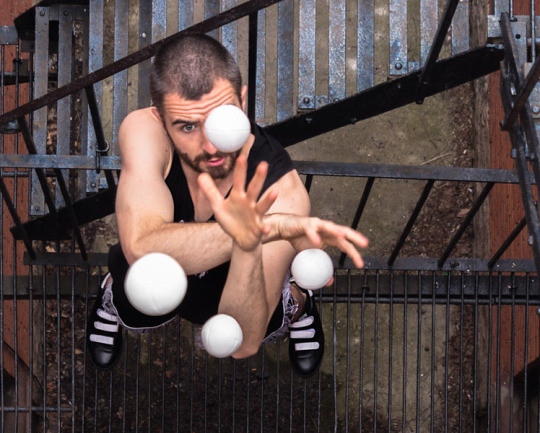
When you’re creating intricate patterns and sequences how do you plan them? There are certain aspects of juggling that you can do best on paper, for me anyway, and certain aspects that you have to be literally trying it to see what works, where the momentum is and how fast you can move or what makes sense with the flow of where the catches are. So it’s a combination of both. It will often be that I’m working on a trick and then I realise something about it, ‘Oh, the momentum of this part makes me want to throw the ball round there’. I film it on my phone and next time I’m on a plane or a train I look at the videos and ‘OK, now I realise that new aspect of the trick’. I will write down many ideas of how to twist that or expand a new idea. Then next time I’m in training I’ll look at my notebook and try all those new things, film them, so it kind of bounces back and forth between literally work in the studio to see how you body and objects work best together and then more, like, academic work back in the office or while I’m travelling.
You have so many records; it’s not about numbers but how many of each prop do you juggle? [Laughs] I have some, but to tell you the truth, it gets a little bit tiring, like, trying to add just one more ball or one more club. I might have invented the most five-club tricks that have ever existed but I don’t juggle the greatest number of clubs that has ever been done. I perform seven clubs and seven balls but I try to… yeah… OK, to be able to juggle seven, eight, nine balls you need speed and accuracy and dedication, and how many hours would I need to put in to add one more ball? That would give one image and it would be amazing, but if I took all of those hours and that dedication and then added my creativity to it and instead used that time to try to make something that no one has ever gone for before.
Up until I was, like, 16 or 17, I was going after just the hardest trick, the biggest trick, the most clubs and after I went to circus university and had more classes in dance and composition I started banging my time and my skill more into composing things that are a little bit harder to put your finger on, because when someone says: “How many of this can you juggle,” it’s easier to compute than, ‘Well, I’ve developed this new technique where rings spiral around my arms in hundreds of different ways. By the time you see the end of the piece you’ll have a whole new vision of how things work. It’s a bit harder to envision, but you have to come to see the show’. [Laughs]
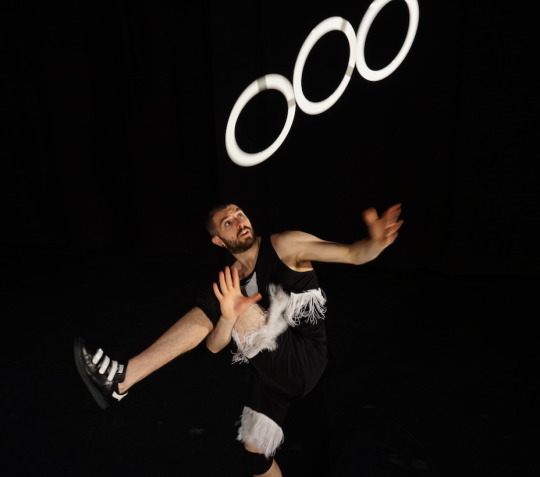
Do you prefer one prop to another? It depends. When I was young I absolutely preferred clubs, like, clubs are the way to be, they can flip this way, the other, rotate, roll… there are many options with them. Then when I started to learn a bit more about how to move my body, I got more interested with balls because you can use them to go around your body, they’re easier going down to the floor and back up. And now I can kind see every prop for what they are good at and if I have an idea of one way of using juggling, like, ‘Oh, this new cross-armed behind-the-neck idea’, what prop will work in that idea best? So now my juggling is more about concepts and then I pull whichever object works with that concept the best. I see them all now like different colours for a painter, whatever is most suitable for this next painting.
What is the best tip you could give to a kid just starting to juggle? I would say to remember that you don’t need three balls to juggle, you can start with one, or any object and try to invent a trick that is fun; something that you think is cool to do. Maybe take your shoe and throw it up and clap behind your back and you catch it again. Or maybe you can set up some spoons on the table and flip one with the other… not to think that juggling is just getting three balls in the air. Juggling is just a relationship between you and objects and making fun tricks that express yourself. I’d say, make sure you’re having fun and, you know, keep going. You will teach yourself as you invent things and gradually build skill. But always make sure you’re having fun.
You mentioned circus university, why did you choose DOCH? I was watching lots of juggling videos and different jugglers from around the world and trying to figure out where they all came from and who taught them and where their different styles were developed, and I realised a lot of my favourite jugglers were from Sweden, or Denmark, or Finland. And then I found out that a bunch of them were going to this school, DOCH. The head teacher at the time was Jay Gilligan, who is a very great juggler; a very clever guy in the modern world of juggling. That was it, ‘I already know his work, I want to juggle like the other guys, so let’s go there and study’.
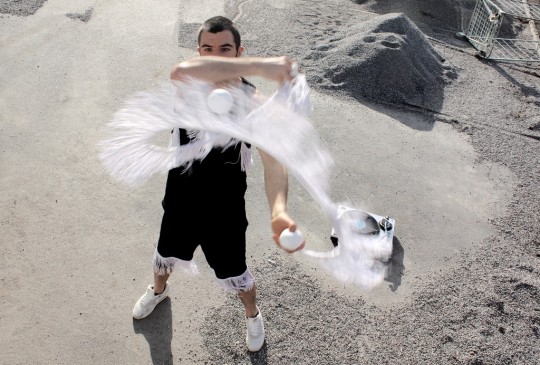
What did it add to your already considerable skills? When I got to the school Jay explained to me: “OK, we have three years to juggle. We're going to be spending the first year developing your technique and making sure you understand everything you can about literal juggling; the tossing, the throwing, making sure everything is clean. The second year we're gonna teach you how to compose, which will not necessarily have anything to do with throwing and catching.” There were certain things when I was supposed to make an interesting routine while holding a watering can, which I wasn't allowed to throw or catch. You have to forget about your skill as a juggler and just use your creativity to make something good without skill. So for a year I did many different composition exercises, like, 'OK, make 100 tricks in 15 minutes'. You’re like, ‘Uhh!’. It really works your brain in the same way that juggling in previous years had worked my muscles and my muscle memory.
And then in the third year you use your skills developed in the first two, you combine your juggling skill, your composition, you figure out what you want to express and put those skills to work in something from yourself. I think that is the main difference between juggling just on your own and going to a school and having someone make you do composition exercises that really got out the creative side of me and let me develop something that was unique to me.

What happened to Plastic Boom? The trio performed quite a bit together and then had a contract working in Vegas on a show. The others have stayed there but I got a replacement for my part so I could continue to do my own full shows and live a more artistic career, so we've kind of split ways a little bit.
Are you affiliated with Gandini Juggling? When they first started to make Spring, me and the two other jugglers from Plastic Boom, all three of us were going to be in the show, but then when we got the offer for the show in Vegas, it kind of was hard to organise with the creation time period of Spring so we jumped out of the project. But then when I wanted to leave Vegas I was partially in the Spring show. I’m good friends with Sean [Gandini], we really share similar visions of why we like juggling, where it can go. We both have energy to develop the art form constantly and now they are my producers.
Did winning a medal in Paris help you? Yes, it did. In a way, my life is kind of a balance of performing in other group shows, like what I’m in now in Helsinki, and doing my own solo work. And after doing Cirque de Demain I got offers doing some varieté theatre in Germany, where I worked two months a year for a few years. Always while I was just doing an act in another show it gave me an opportunity to be in the same place for a couple of months and really work on the stuff that would be in my next show. In happenstance, after Paris, I got booked for one show in Germany, and I had a huge apartment for that show in the theatre, with a high ceiling, so every day I would spend six or seven hours working on all this new juggling that is now in Zebra. So everything kind of connects… win that, get a good space to juggle, make the juggling for the next show that starts to tour.
vimeo
Tell us about Zebra. Zebra was kind of a balance based on a show I’d done previously called Volcano VS Palm Tree, which was very explosive and kind of chaotic, and I wanted something more precise where every place my arm was put, every step, every throw was perfectly organised and a bit more, yeah, very, very precise. So this show is about that, and composing juggling with normal juggling objects but in such a way that it doesn’t look like traditional juggling. Let me explain that a bit. For example, there’s a part where I juggle balls where the rule of the whole piece is that it has to be ball juggling where everything is bouncing off my arms. I’ve composed that and developed it over a few years so that by the time you’re a few minutes into the piece it stops to look like ball juggling and starts to look just like elbow bouncing and kind of this new family, this new language of ways of working… to keep it really specific like that.
There’s a piece with five clubs where I’m facing away from the audience and the light is just above my head, so I’ve made the juggling where the only part of it that matters is what’s in the air and you start to forget that I’m throwing and catching and there’s any skill involved because it’s made around watching these waves, or these triangles or these shapes transform into different constellations. So trying to remove the idea of you’re watching it to be impressed and more that you’re watching an idea unfold and evolve and focus more on the content of the ideas within the juggling. In the way you watch a dancer, you’re not, like, ‘Wow, look how high they jump’, but you’re following the idea of what the choreographer is making onstage.
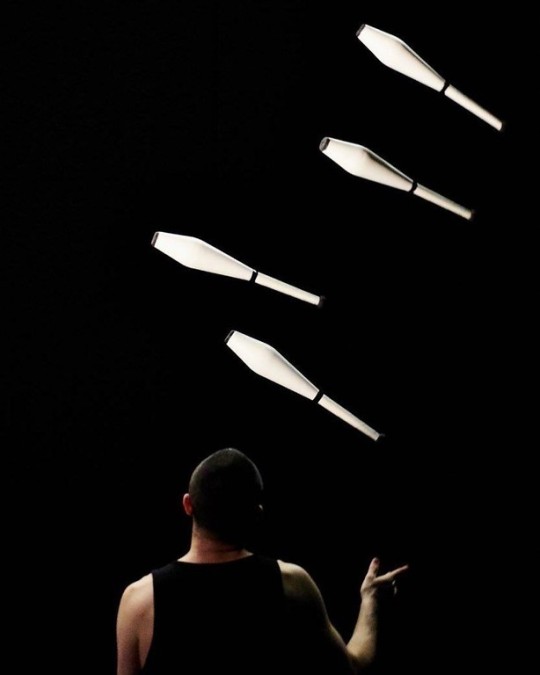
It sounds fantastic! You’ve performed in London before, but how do you feel about being in the Mime Festival? I’m very excited to be there. Whenever I’m in a festival and can look at all the other shows in the programme and think, ‘I want to go to every single one of these’, I feel at home, and think, ‘Great! I’m in a like-minded space. I’m really happy that my juggling is fitting into a world that I made it for, and I know that the type of audience that goes to these types of shows will see the juggling in the same way that I do’. And I really think that’s it’s a good home for the show. I’m very happy to be part of it.
Can pick out, from your lengthy career, any particular highlights? I really remember the first time I performed Zebra was in Paris. I’d been working on it for a few years and I really wasn’t sure how it would go, because I was like, ‘Are the people going to respond to this? I’m trying to make something quite different. Is it going to work the same way for them as I see it?’, because sometimes when you’re in your own work for too long, you can’t see it anymore from someone’s eye that’s never seen it before and yeah, when I came offstage and everything had gone so well…
I was also very nervous because the show was all run on vinyl records; there are times when I’m like, throwing them, and bouncing them and if I break one, that’s it. That’s my little twist on the idea of jugging being dangerous, because it’s often dangerous for the juggler, juggling chainsaws or whatever, and now I try to work very closely with the objects and I want to do juggling that a ball would want to do. Or if I was a record, how would I like to be juggled? And now there is danger for the object [laughs]… it could break, and danger for the entire show. But it went OK, I didn’t get so nervous that I broke a record. It went great. That was one of the best feelings I’ve had.
I also make juggling films. I often work for a few years at a time making juggling films that are kind of like skate films, where I collect the coolest tricks and find themes to edit them around and I release those every couple of years for the juggling community. My most recent one is called Gumball, which people can see pieces of on YouTube. When I released that it had been in the works for almost three years and that was one of my highlights that I could make film-specific juggling and had a lot of tricks that I’d never seen done ever before. Yeah, it was like a big expression of who I am and this is how I believe it can be and, here we go, I hope you like it. Sending something like that out to the world feels great.
youtube
Wes appears in Zebra at the Southbank Centre’s Purcell Room from 24-26 January 2020 during the London International Mime Festival
Picture credits: Headshot, Pierre Feniello. Zebra in order, Avi Pryntz-Nadworny; Brend Van Kerckhove; Florence Huet; Luke Burrage; Sonia Sleurs
Wes’ website
For tickets to Zebra, click here
London International Mime Festival, what’s on
Twitter: @WesPeden; @MimeLondon; @southbankcentre
Follow @TheWidowStanton on Twitter
#wes peden#juggler#circus interview#doch stockholm#London International Mime Festival#southbank centre#Gandini juggling#zebra
0 notes